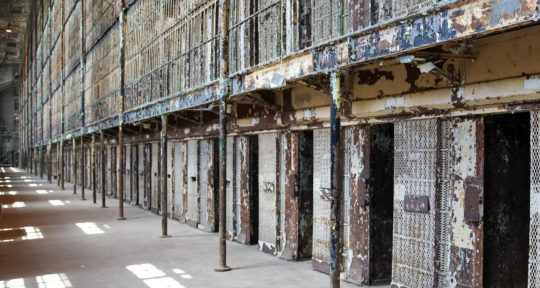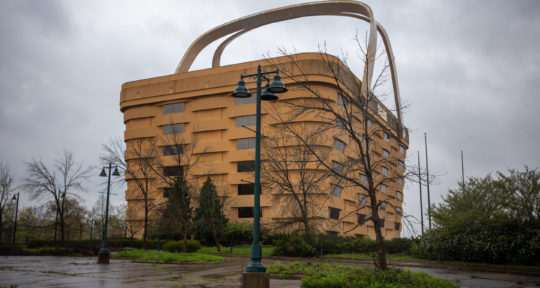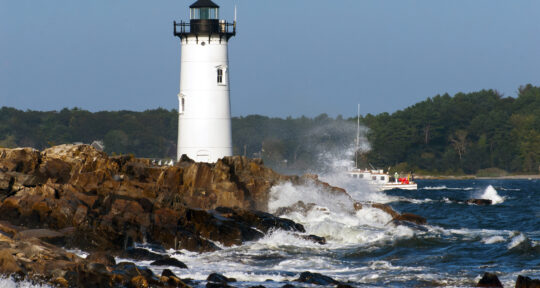Since its inception, visitors have flocked to Coney Island expecting the strange and unusual. The Mermaid Parade, the largest art parade in the nation, delivers on that promise so completely that I can’t imagine it taking place anywhere else but Coney Island. The parade features more than 3,000 artists from all over the world paying homage to mermaids, Neptune (the Roman god of water), and all other creatures of-the-sea.
Since 1983, the parade has marked the unofficial start of summer in New York City. The 2020 parade was canceled due to the COVID-19 pandemic, but typically the event takes place right around the official first day of summer—rain or shine. According to Coney Island USA’s website, the mission of the parade is to bring “mythology to life for local residents who live on streets named Mermaid and Neptune,” create “self-esteem in a district that is often disregarded as entertainment,” and to allow “artistic New Yorkers to find self-expression in public.”
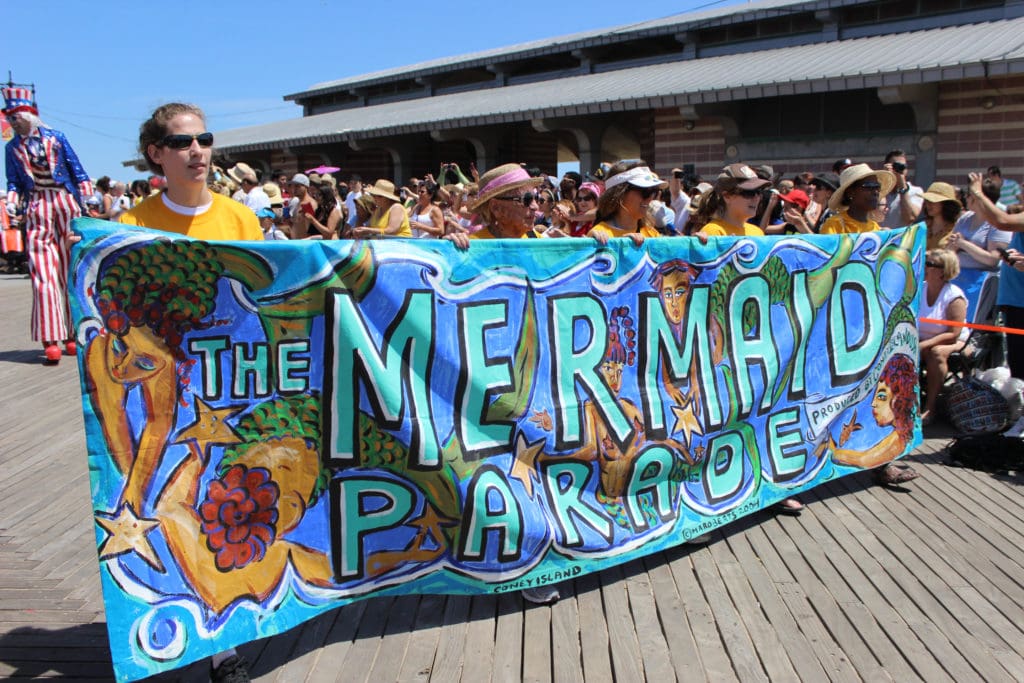
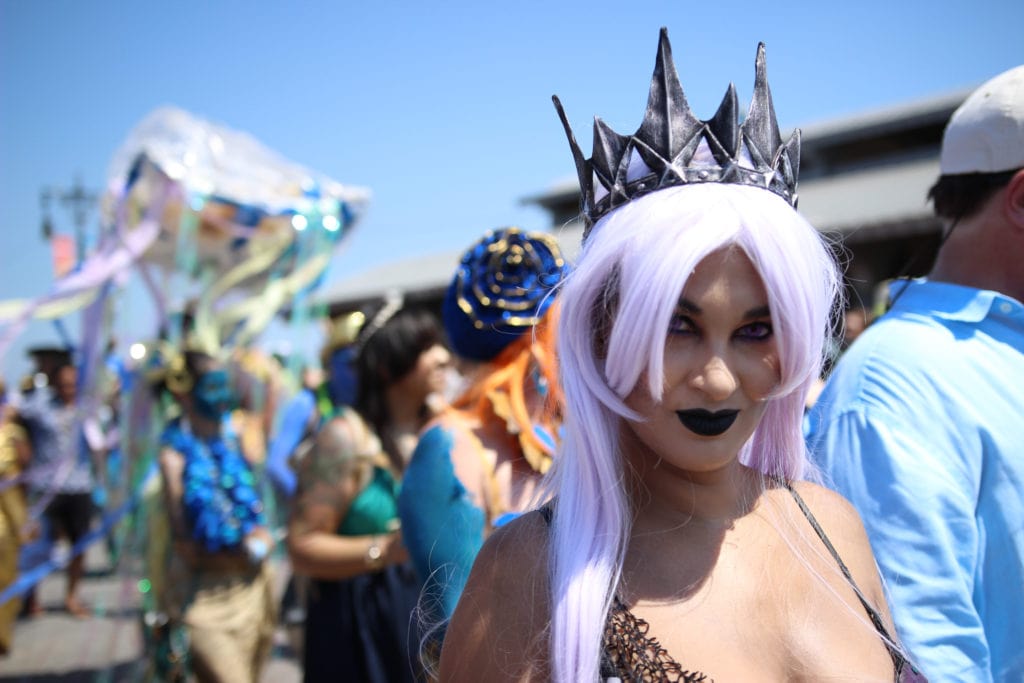
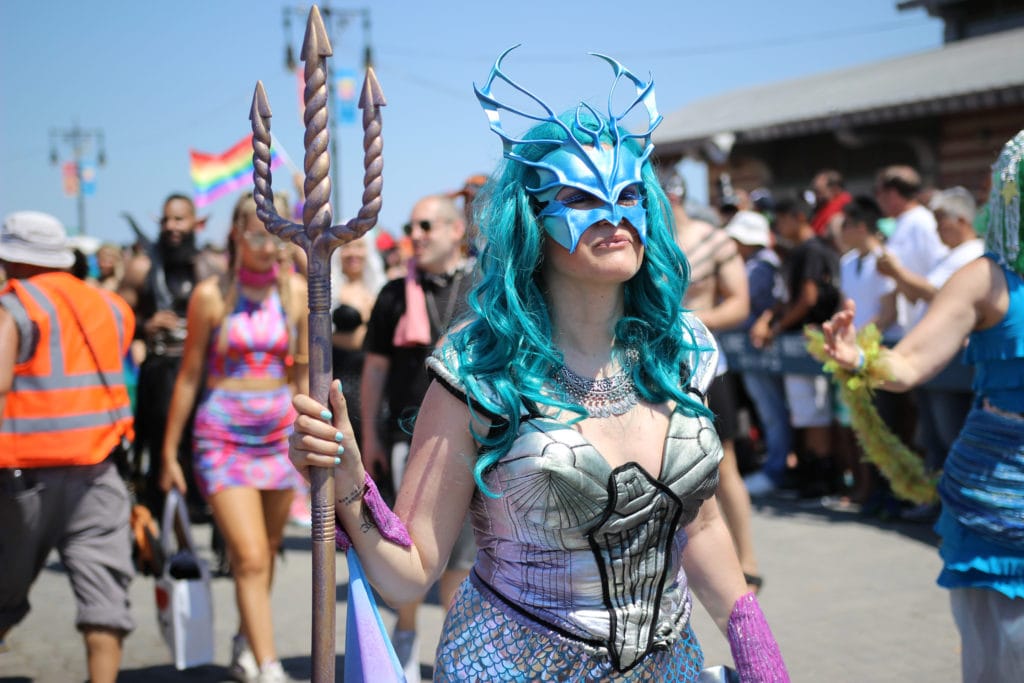
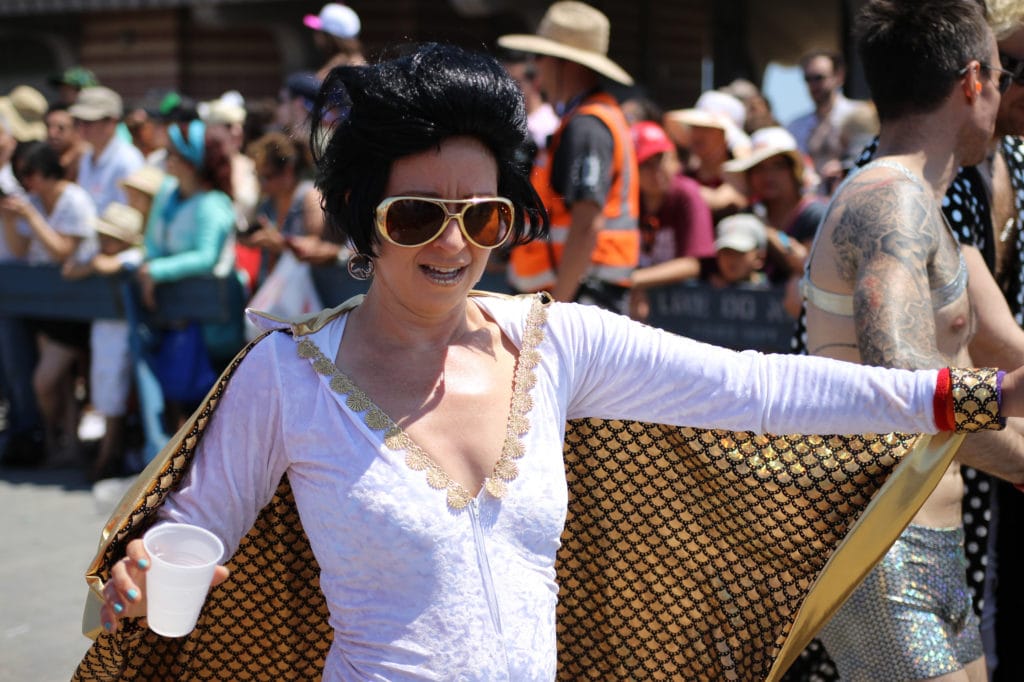
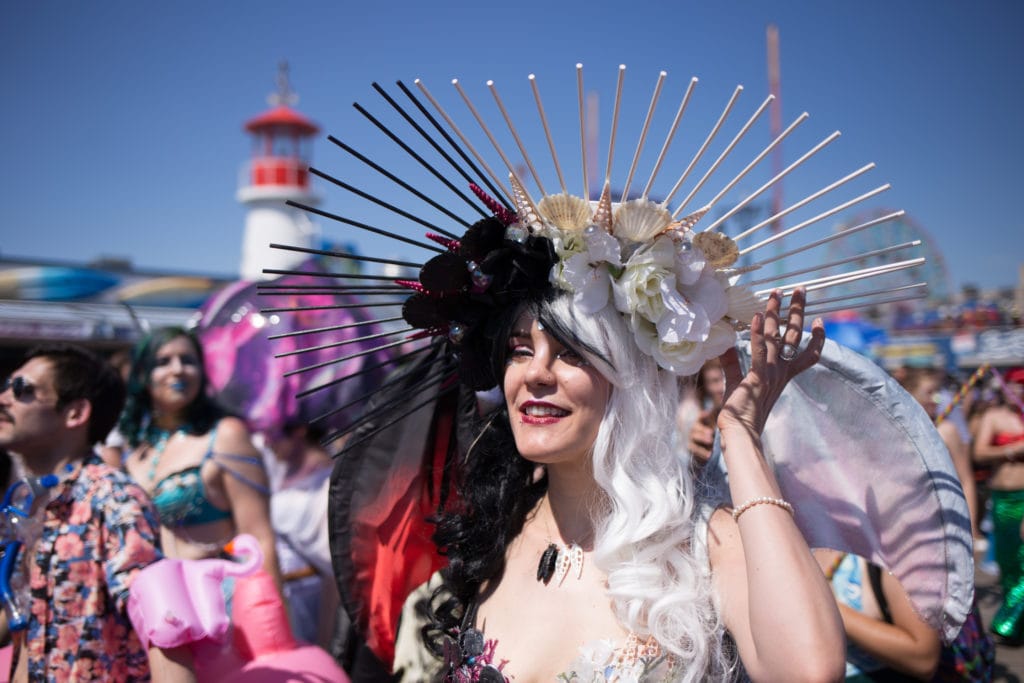
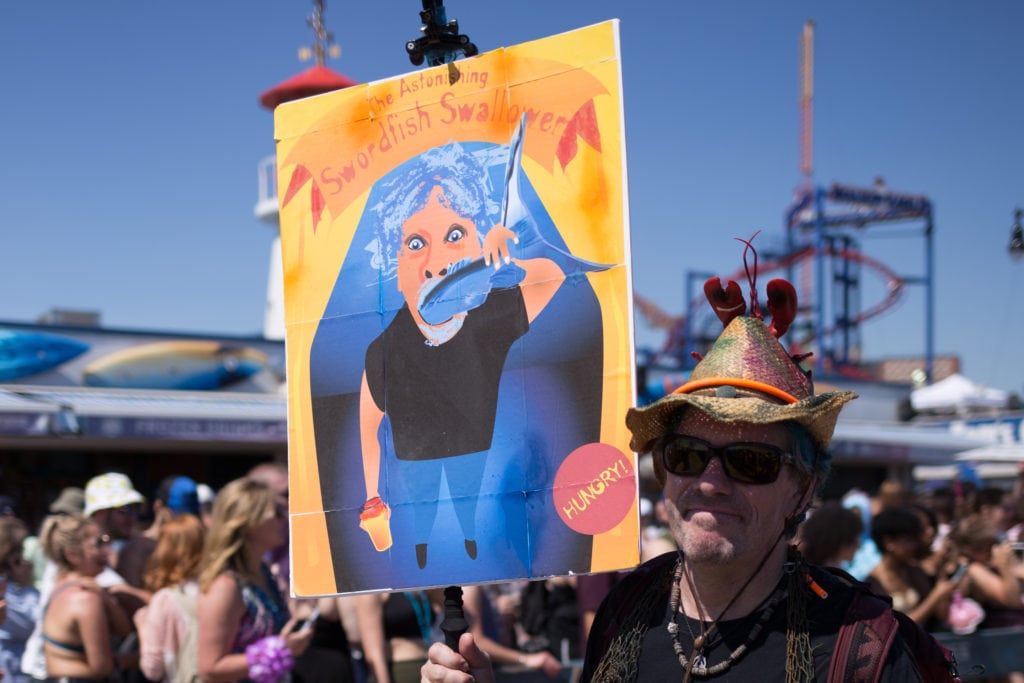
The best part about the Mermaid Parade, however, is how very unlike every other parade it is. There are a few groups and corporations represented, but for the most part it’s just people being their weird, creative, authentic selves. It’s everything I love about Coney Island and New York in one event—like the Village Halloween parade but on a bright, sunny summer afternoon.
Free the flippers
Leading the parade every year since its inception is parade creator and unofficial mayor of Coney Island, Dick D. Zigun—a playwright and performance artist with an MFA from the Yale School of Drama and an obsession with American popular culture. Zigun leads the procession in his signature top hat, beating a drum emblazoned with Coney Island’s grinning mascot. He founded the non-profit organization Coney Island U.S.A.—which includes the Coney Island Sideshow and museum—in 1980 and invented the Mermaid Parade three years later. “The first parade had more people in it than spectators watching it,” he says.
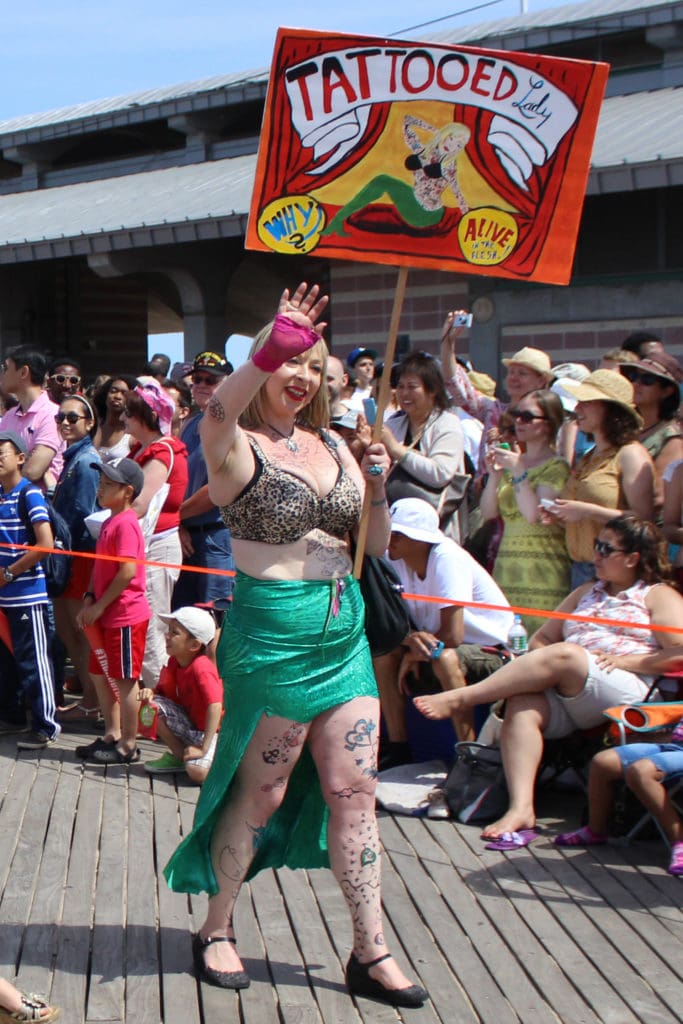
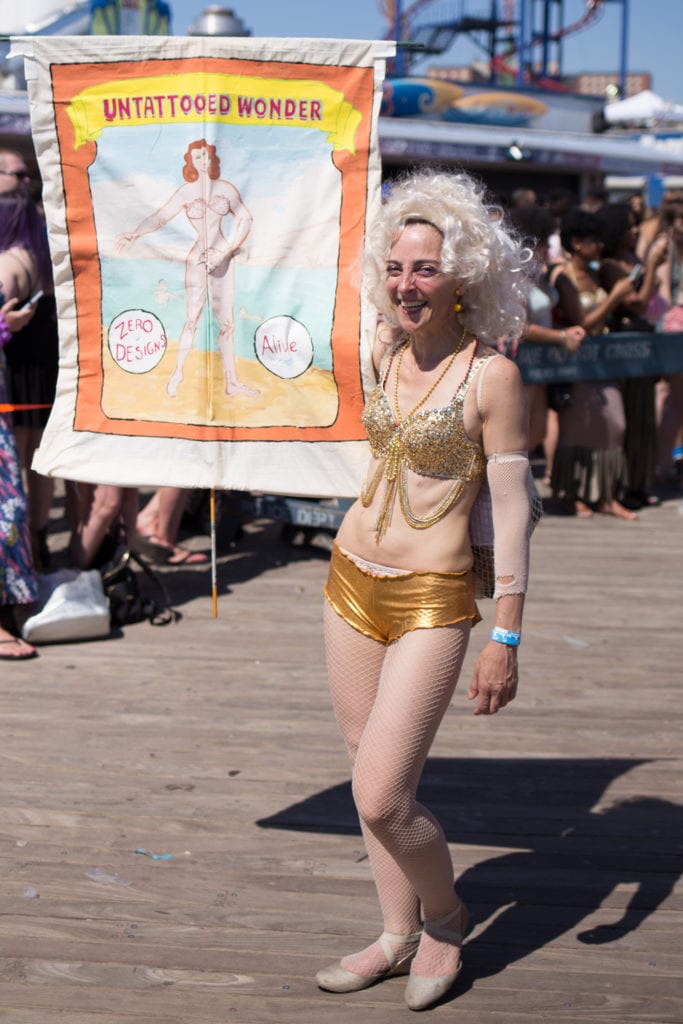
During the 2018 parade, 830,000 people descended upon Coney Island, making the population of the Mermaid Parade “bigger than Boston,” Zigun says. In the first half of the 20th century, Coney Island was famous for a full week of Mardi Gras parades. While Zigun wanted to pay tribute to that history, he says, “Our Mermaid Parade is intentionally 100 percent unique and New York and arty and I’m so proud to have made up my own holiday.”
Each year, Zigun is followed by a new Queen Mermaid and King Neptune; this year Arlo and Nora Guthrie take the reins. Past couples have included Chris Stein and Debbie Harry, Neil Gaiman and Amanda Palmer, and Lou Reed and Laurie Anderson. The title is an honorary—and thus, unpaid—position. “I ask 50 cool New York celebs until one says yes,” Zigun says.
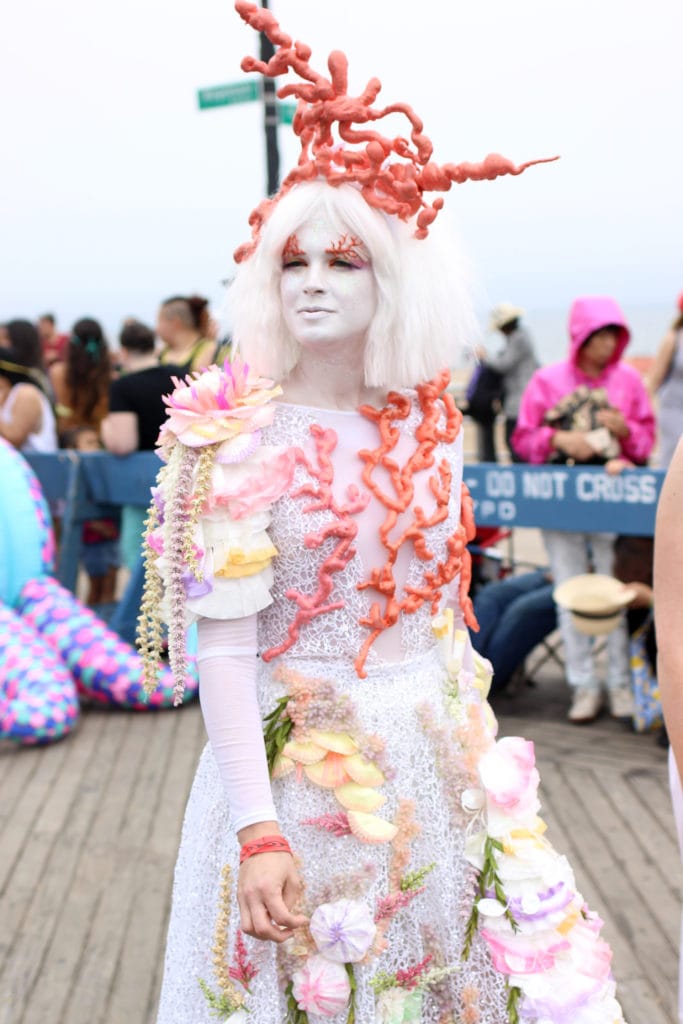
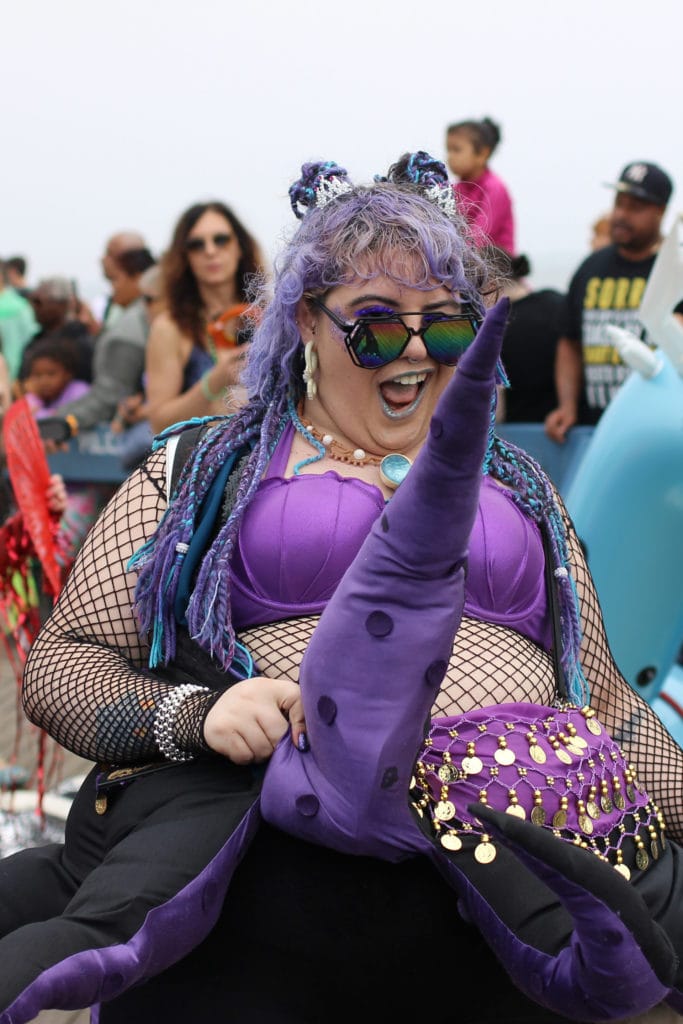
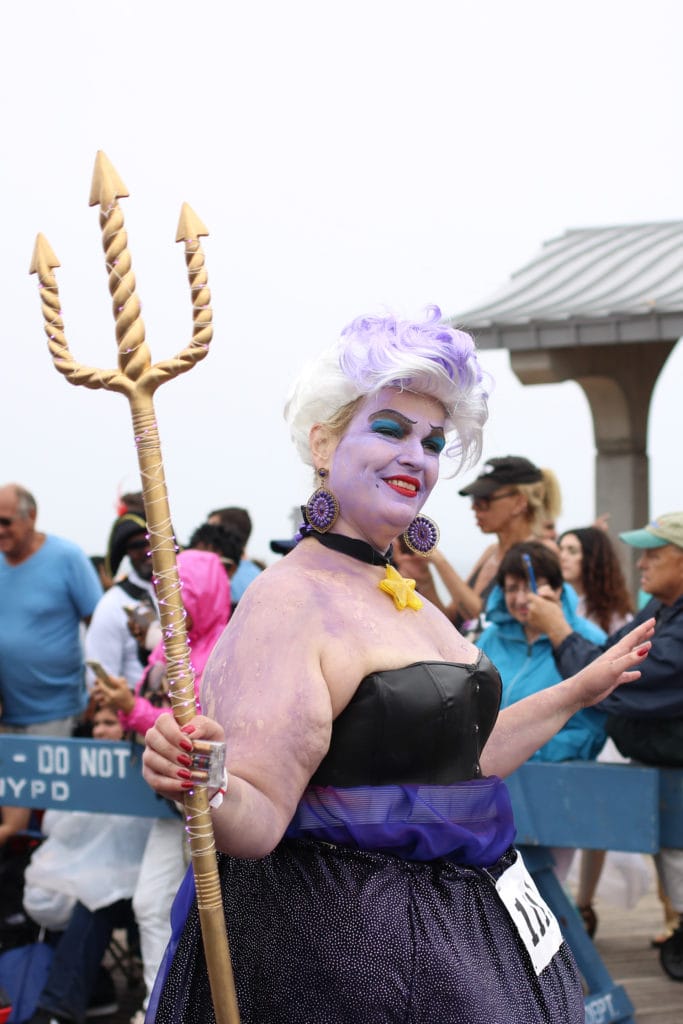
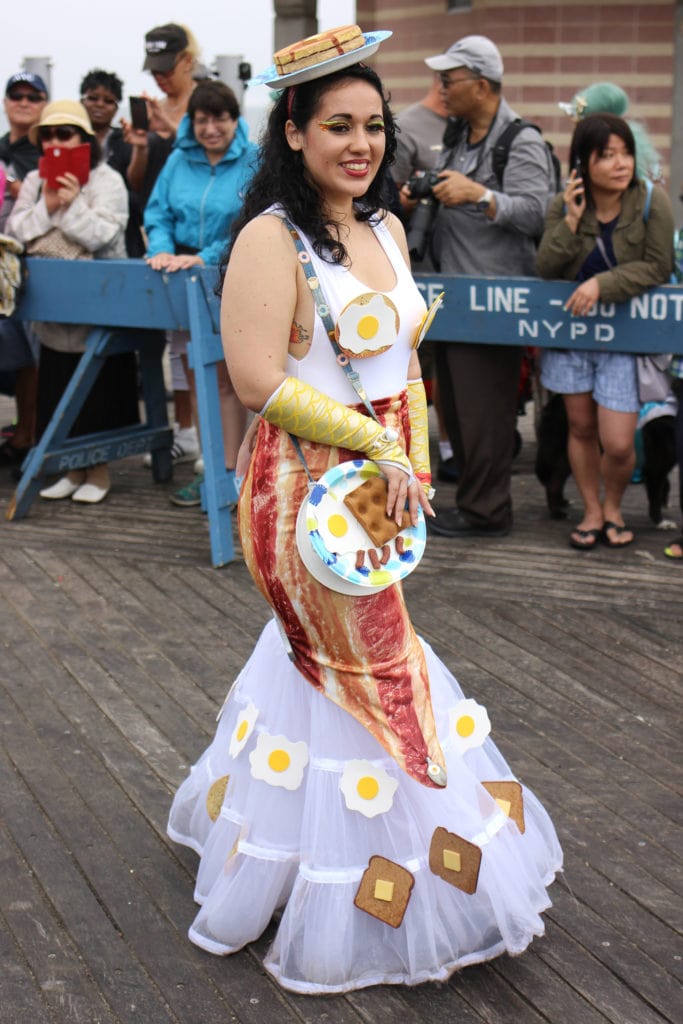
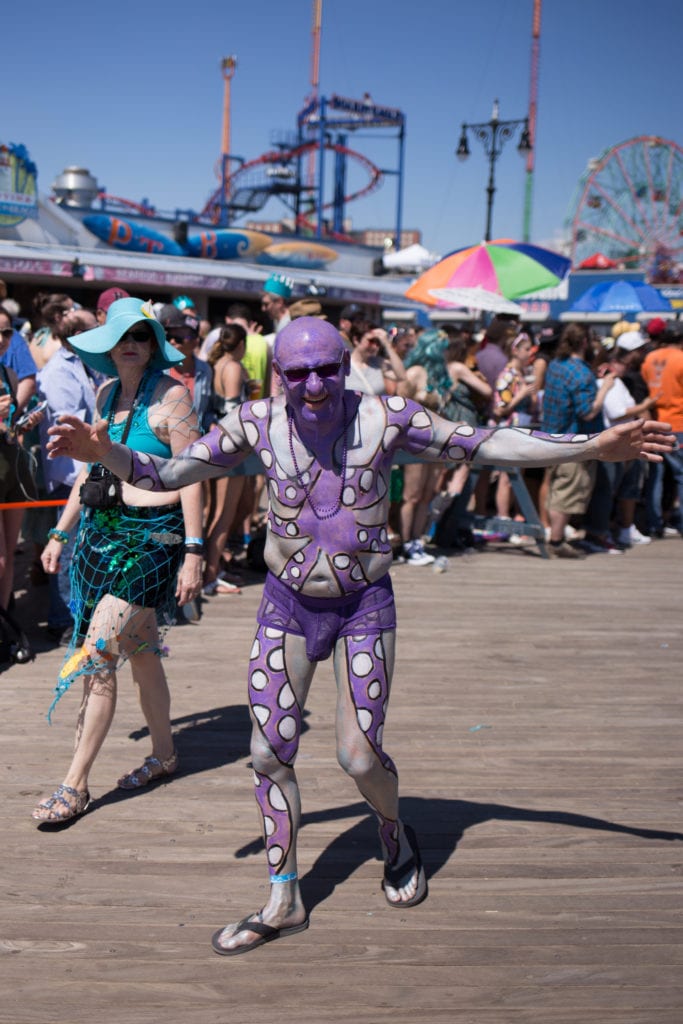
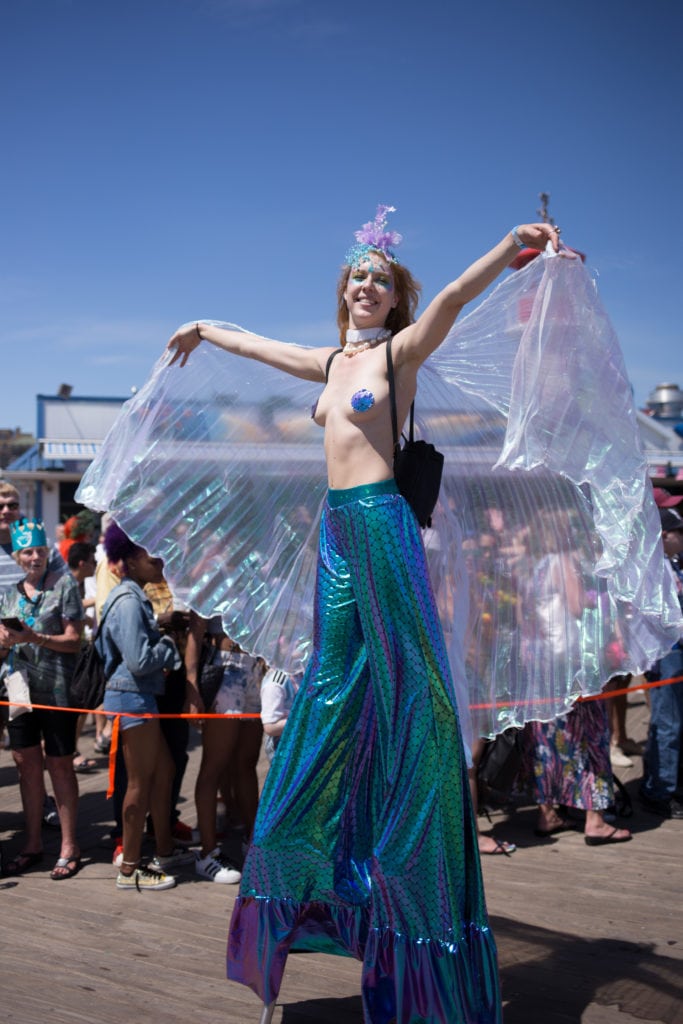
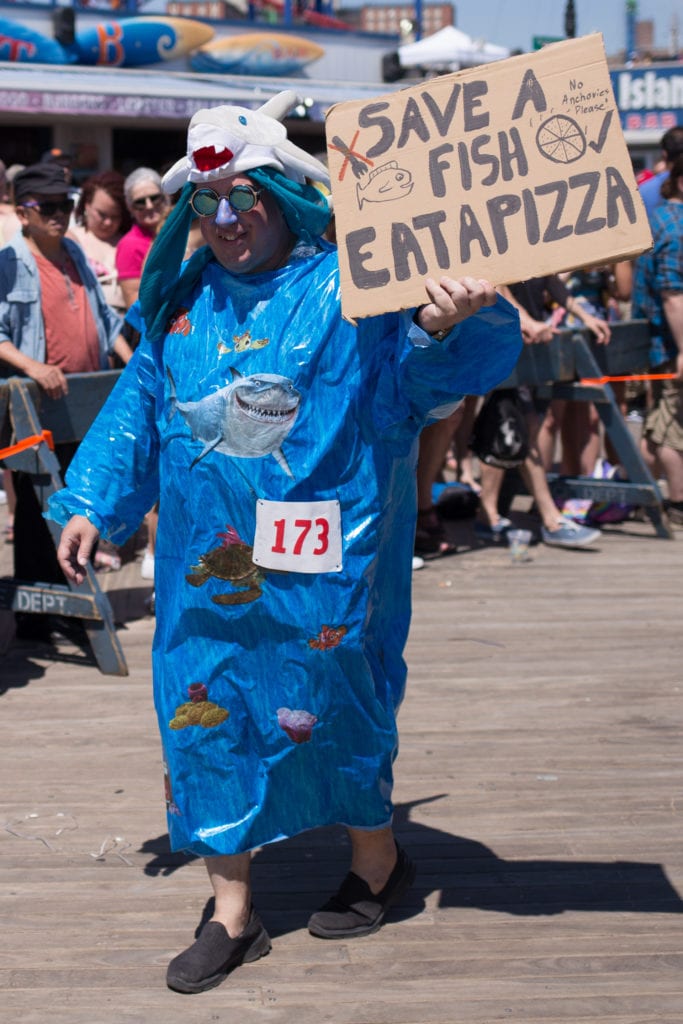
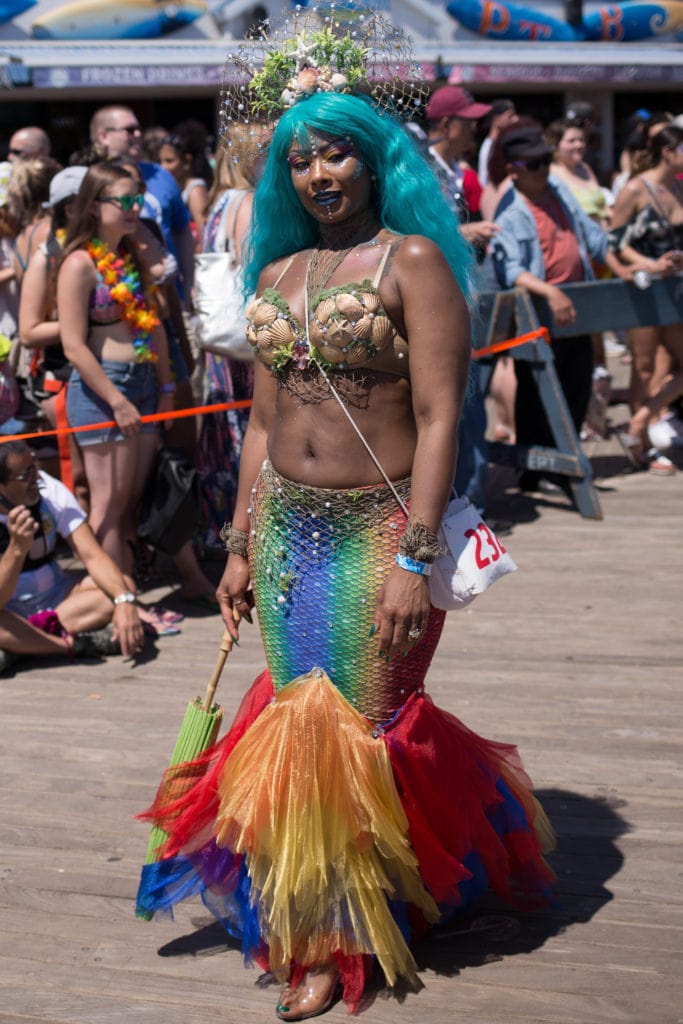
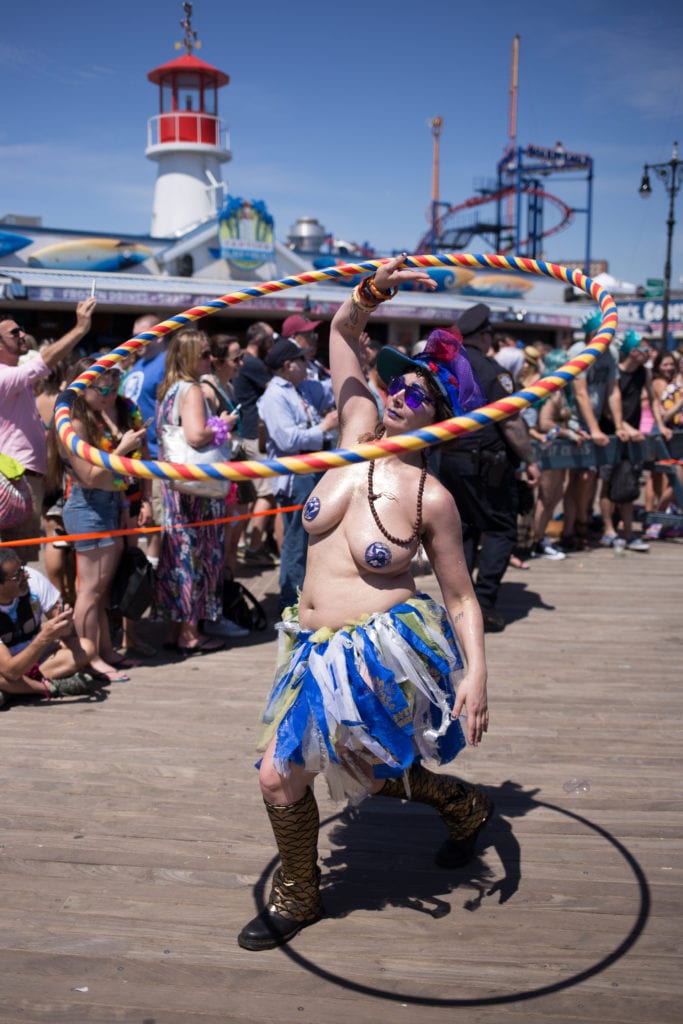
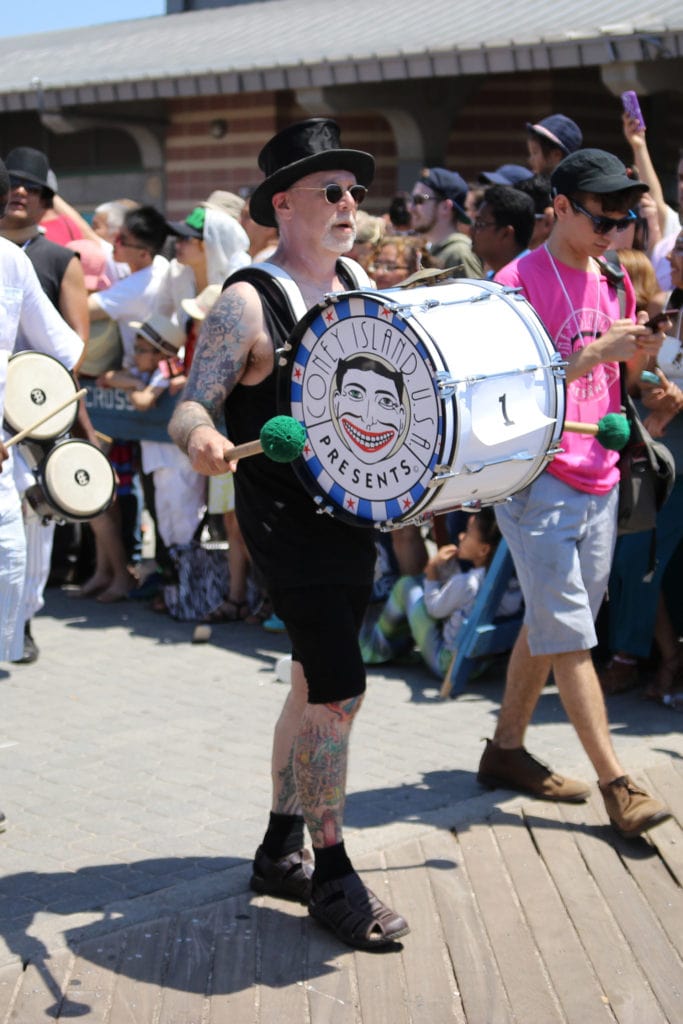
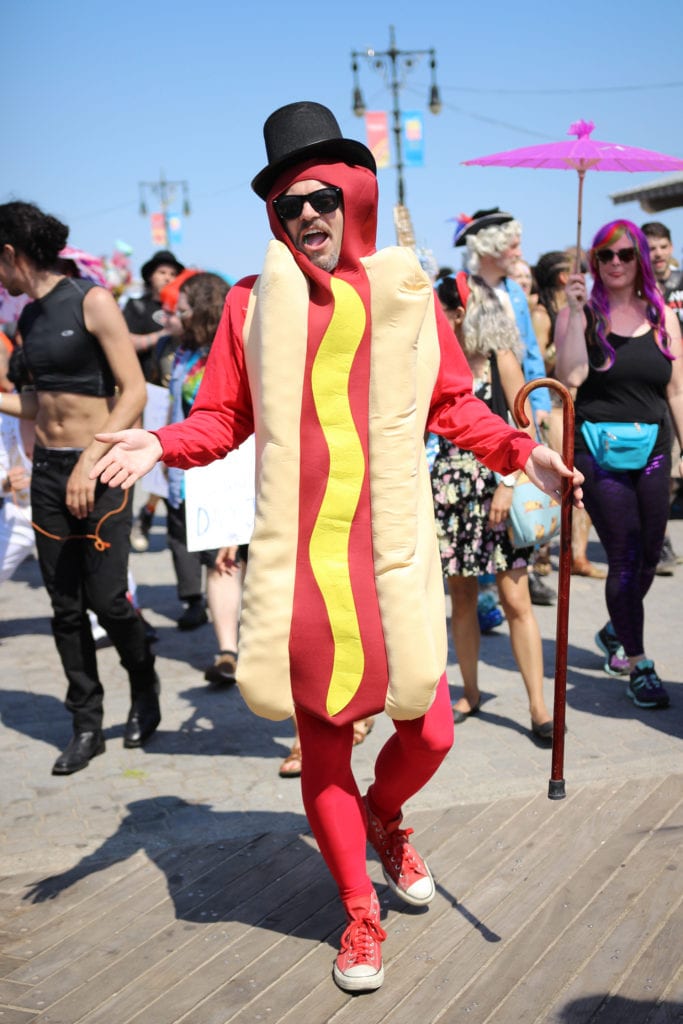
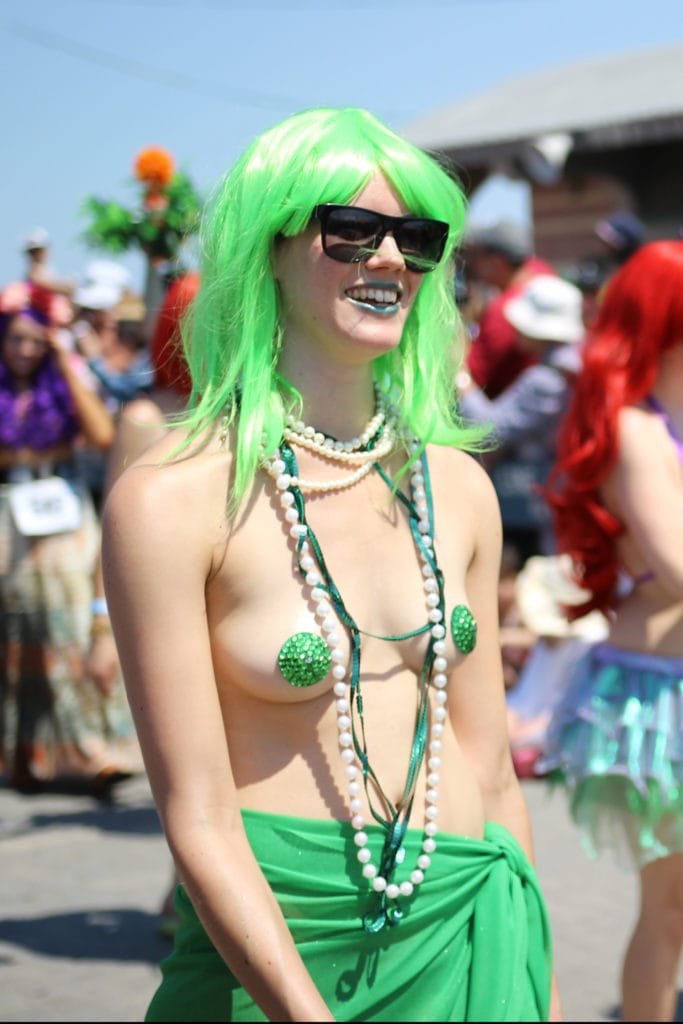
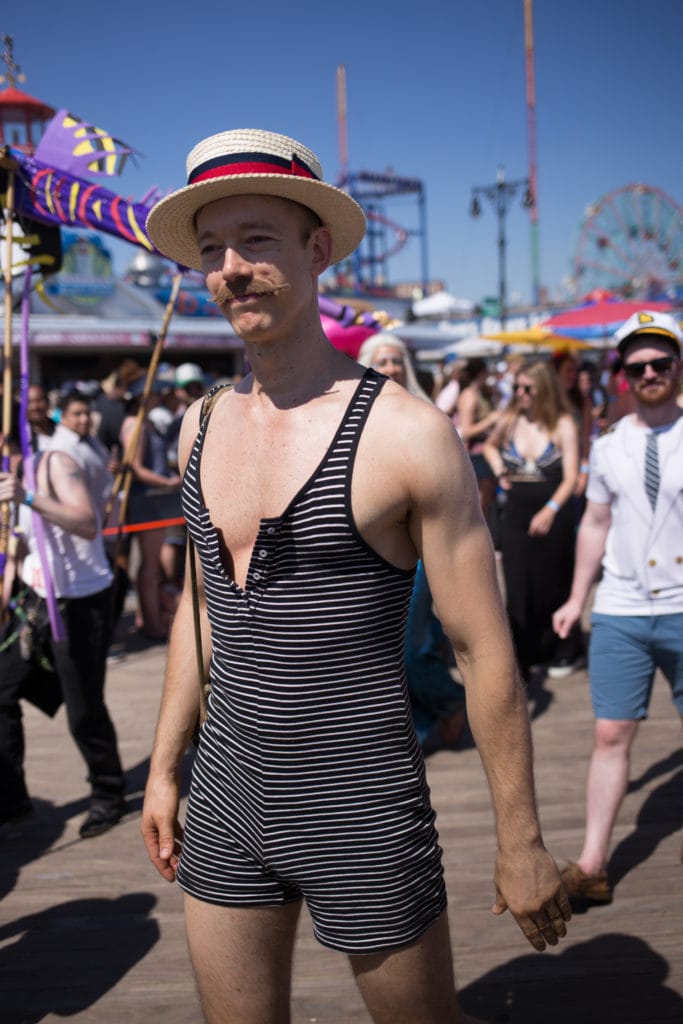
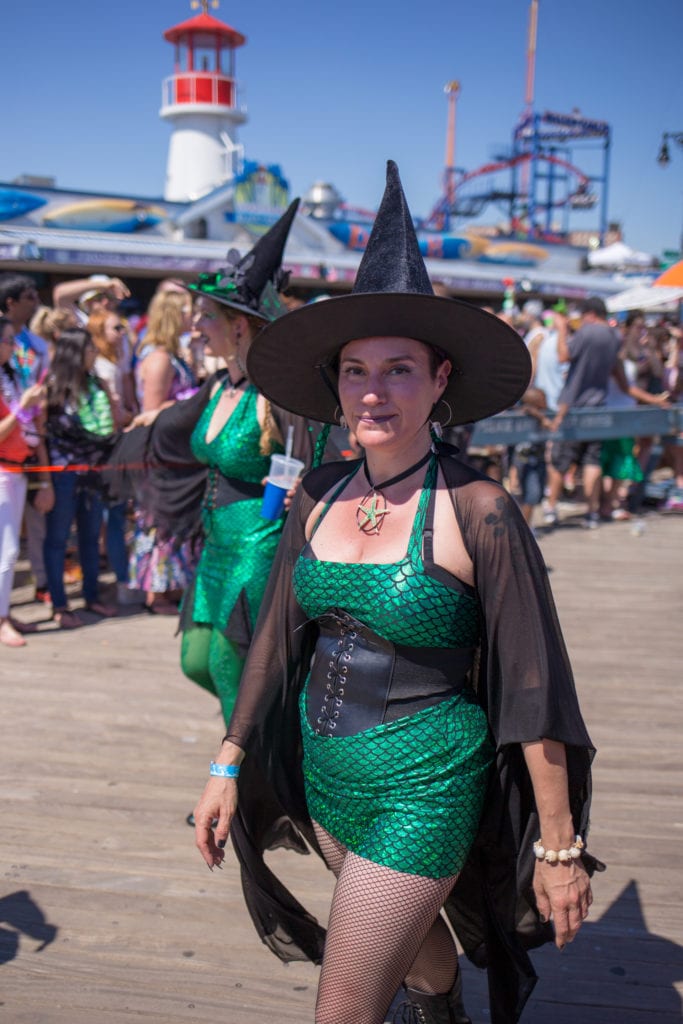
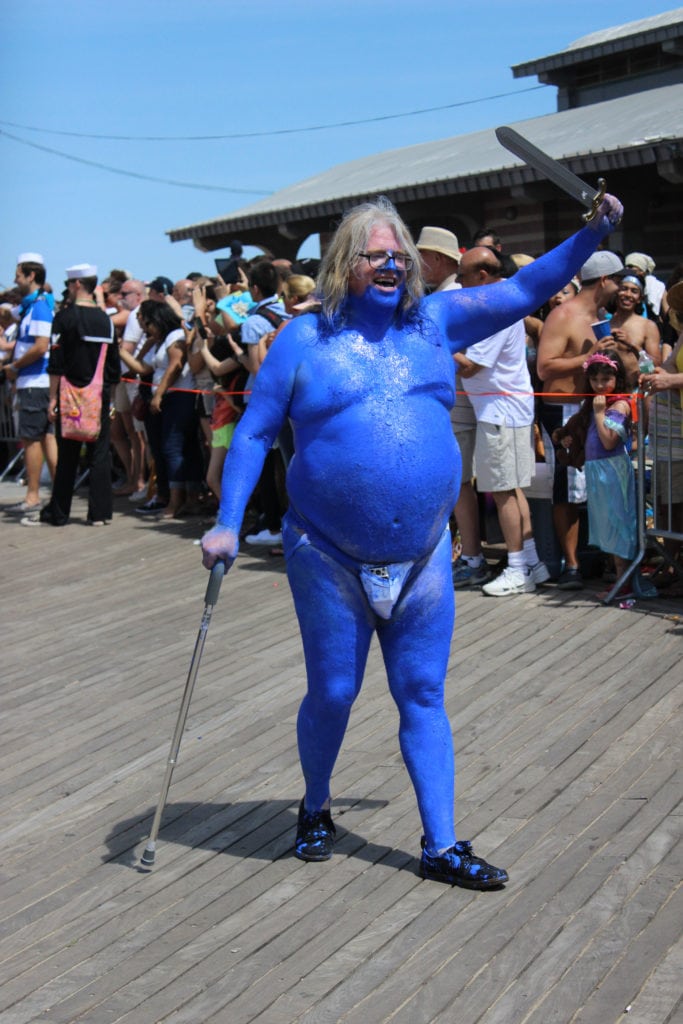
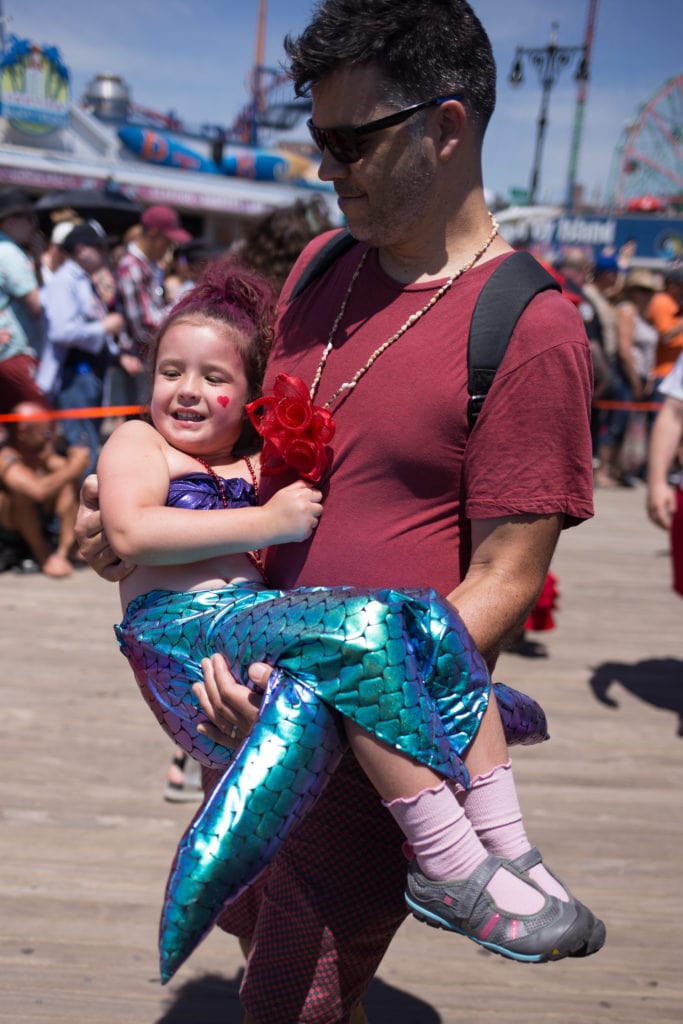
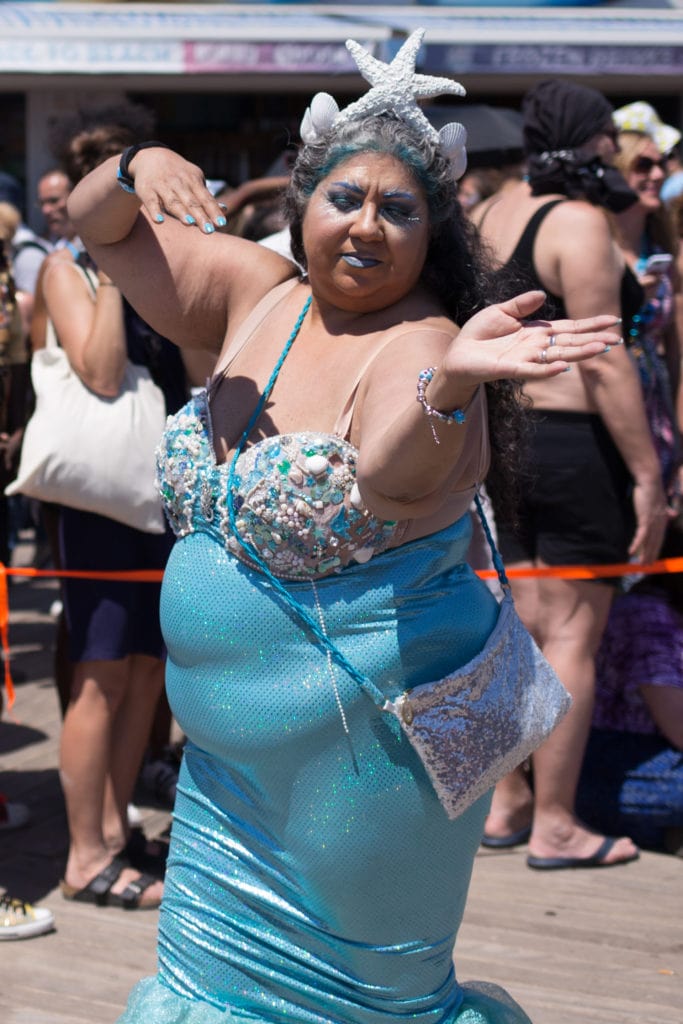
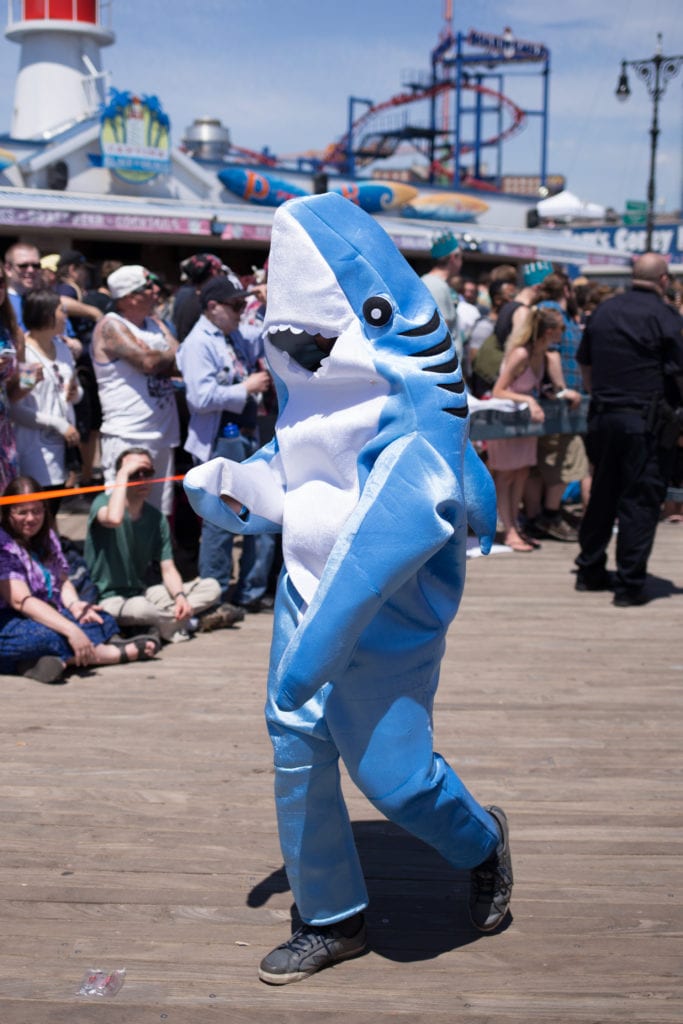
Parade participants craft their costumes with gallons of glitter, body paint, and other craft store staples. For one day only, lobsters, octopuses, crabs, sharks, jellyfish, and of course, mermaids, emerge from the sea—or the subway—and walk, roll, or ride along Surf Avenue and onto the boardwalk.
It is completely legal for persons of all genders to be topless in New York City, and the Mermaid Parade is full of people taking advantage of this freedom. For those on the more conservative side, nipples can be creatively covered by sparkly cupcakes, tassels, fried eggs, coconuts, coral, rhinestones, starfish, seashells, or handfuls of sequins.
For one day only, lobsters, octopuses, crabs, sharks, jellyfish, and of course, mermaids, emerge from the sea—or the subway.
Thea Lewis, who lives in the Sugar Hill neighborhood of Harlem, marched one year in a plastic shell bra covered in shiny shells and strategically placed starfish. “It’s the closest I’ve ever felt to being a celebrity,” she says. “I couldn’t take 10 steps without being asked for a picture and I loved every second of it!”
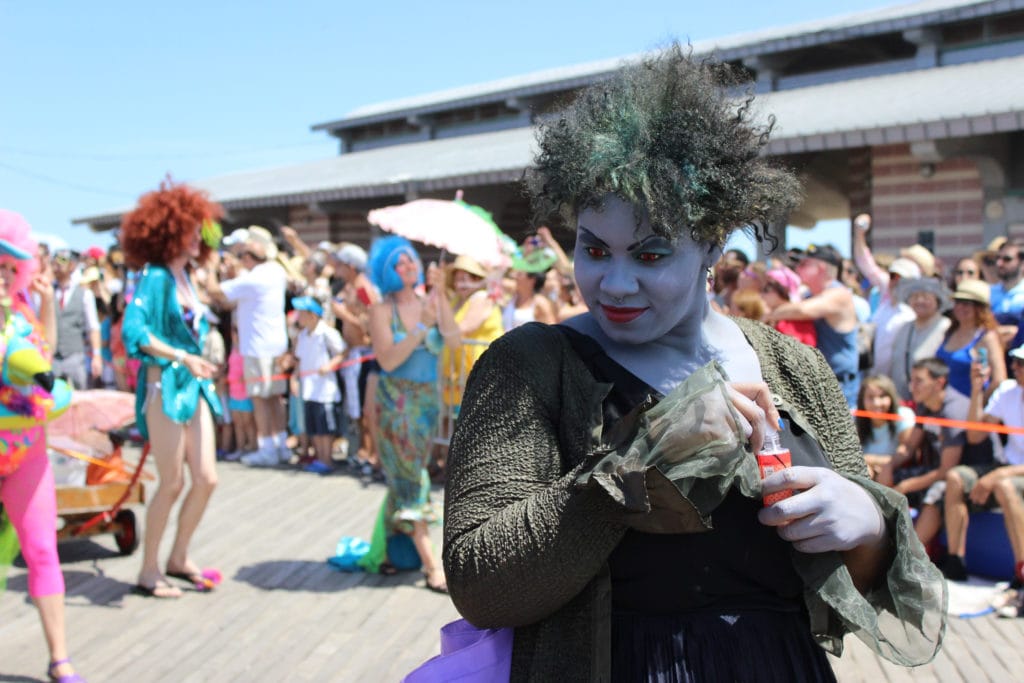
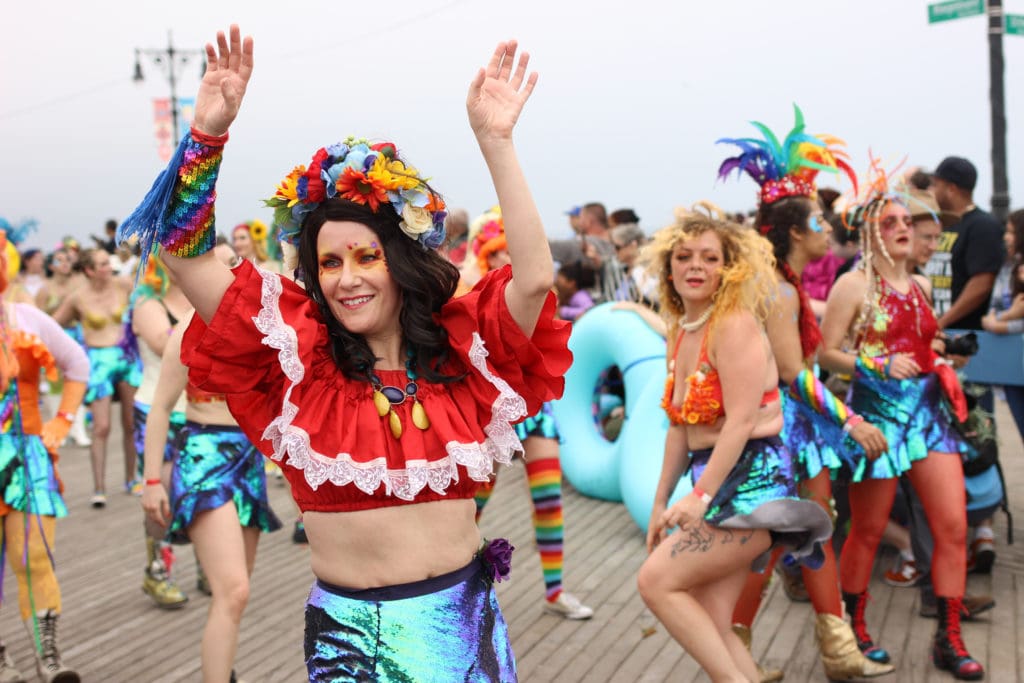
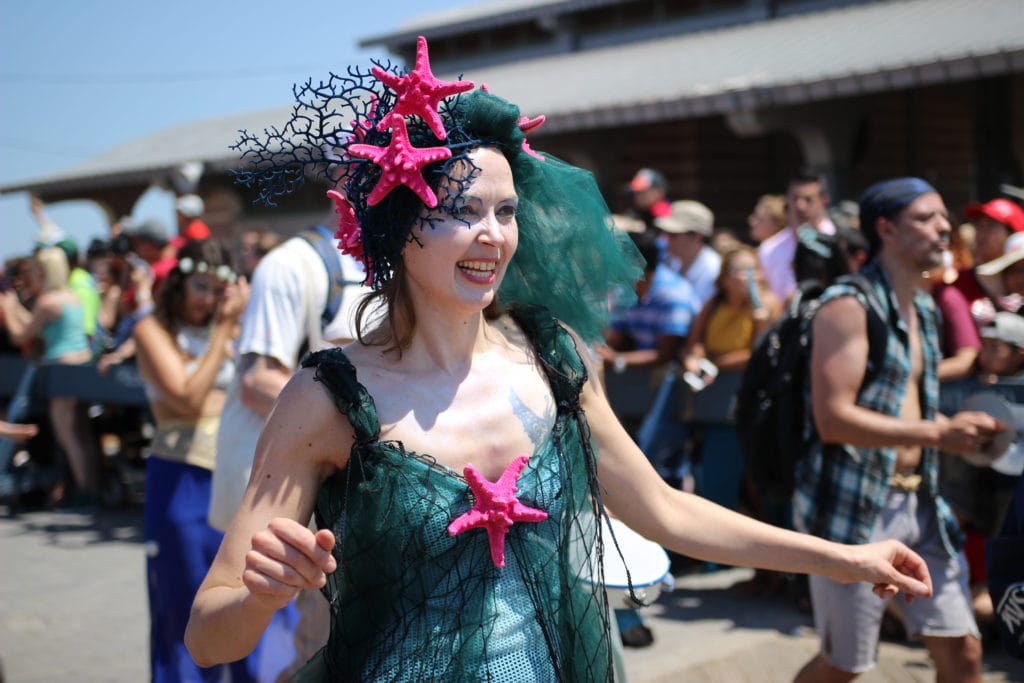
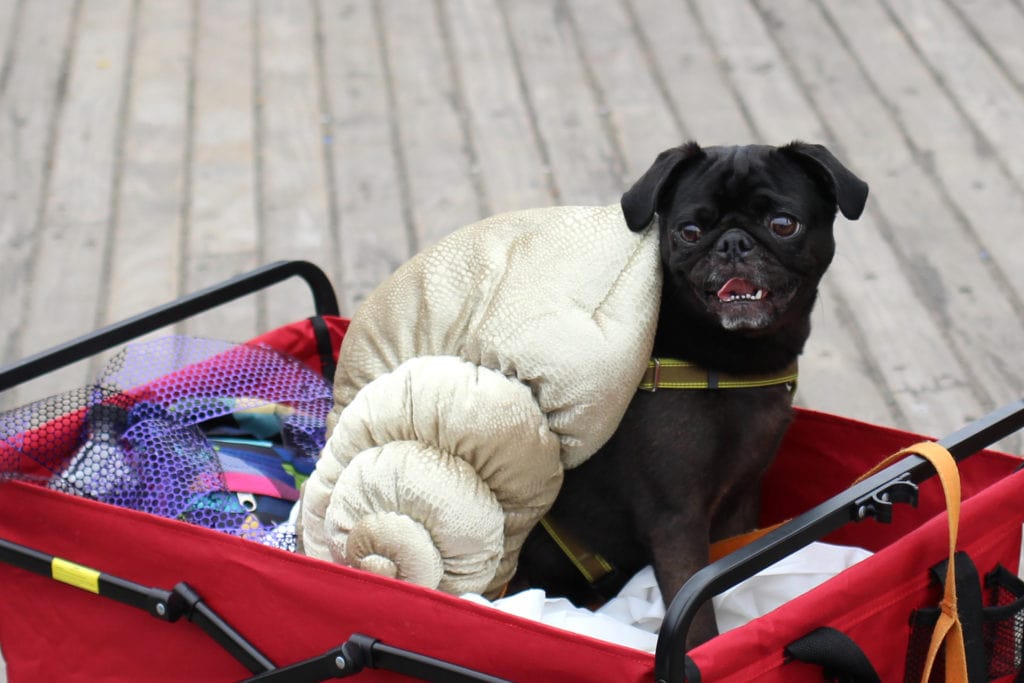
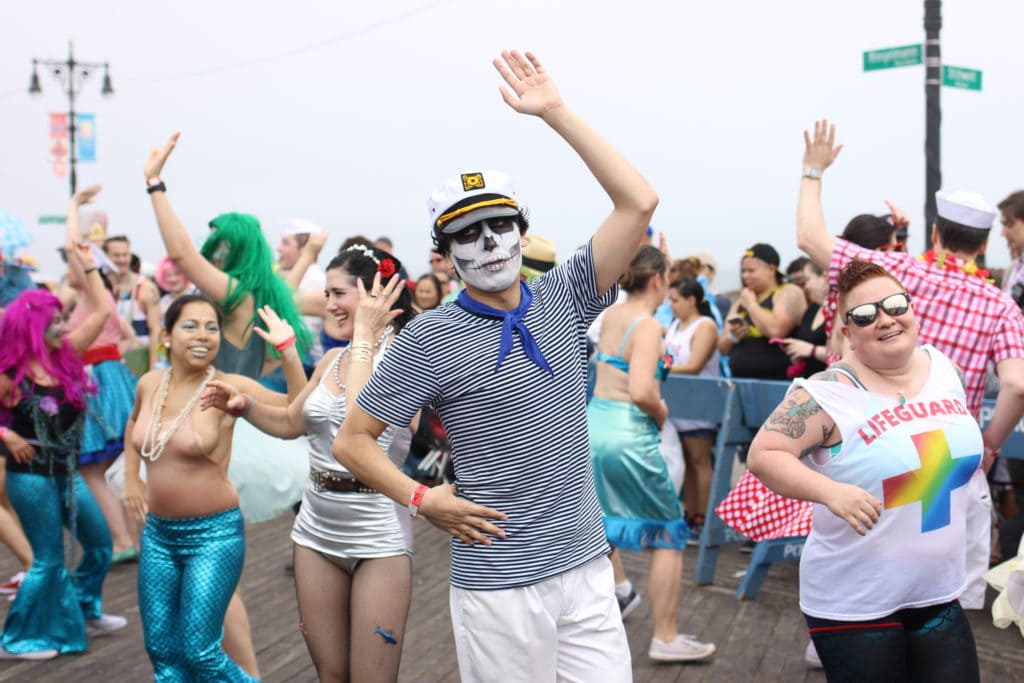
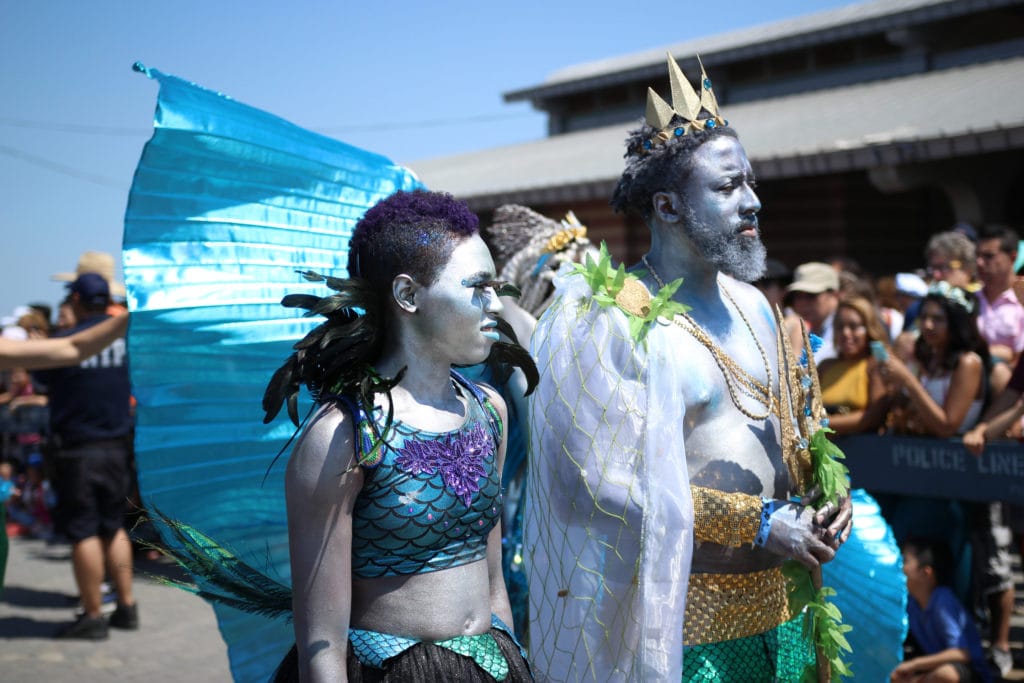
Those in need of a healthy dose of body positivity need look no further than the Mermaid Parade. Every size, shape, age, and race is represented, all beautiful, joyful, and free. Mermaids may not be inherently feminist—those tails look awfully binding, and one can never forget that the prince in The Little Mermaid falls in love with the mermaid only after she can no longer speak—but the Mermaid Parade feels both inclusive and celebratory.
“It’s an event for kids, queers, tourists, and just about everyone else,” says Lewis. “It’s miraculous and magical with an audience far more diverse than your typical parade.”
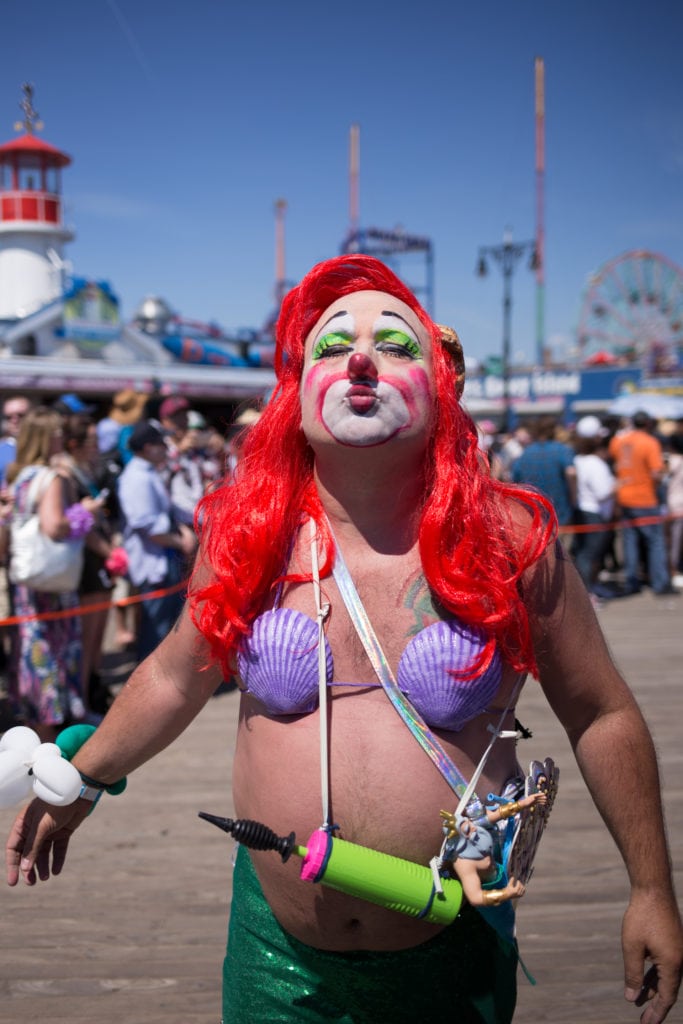
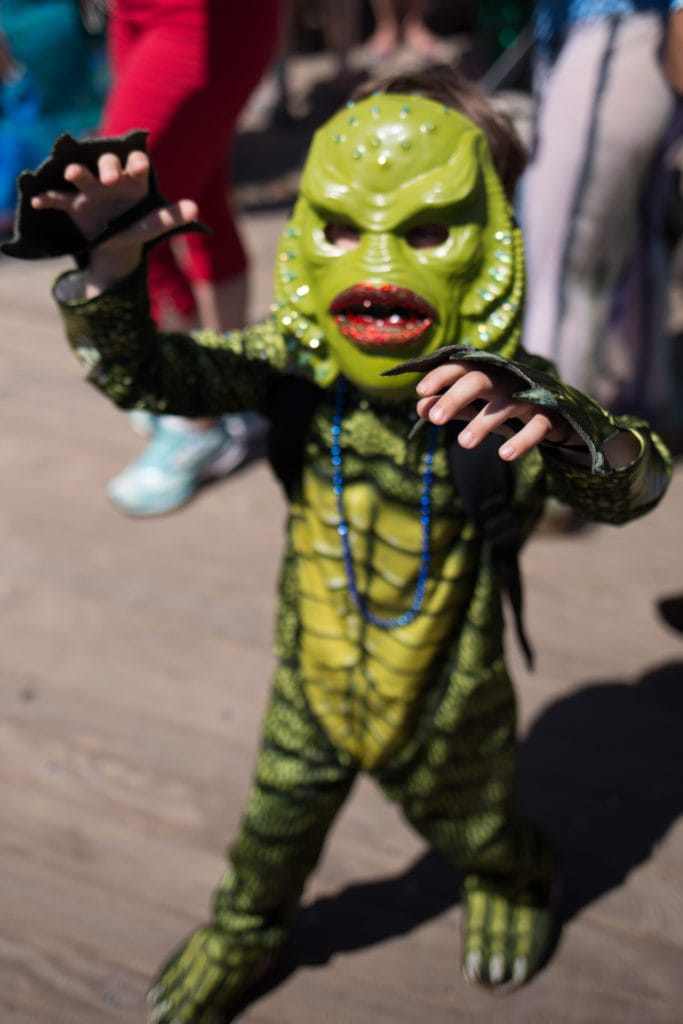
Coney Island U.S.A. offers this friendly warning: “The Mermaid Parade is an art parade and is for everyone, just keep in mind that some folks will be dressed as Mermaids and Mermen who, let’s face it, aren’t historically known for wearing much clothing.”
Handmermaids and Ruth Wader Finsburg
Most modern parades are overrun with corporations or politicians pushing their agenda, but the only agenda on display in Coney Island is fun. Ok, maybe that’s not entirely true—current events-inspired costumes like “Ruth Wader Finsburg” advocating for “seaquality for all” and “reel justice” have always been a part of the parade, and since 2016 political statements seem to be increasing in popularity.
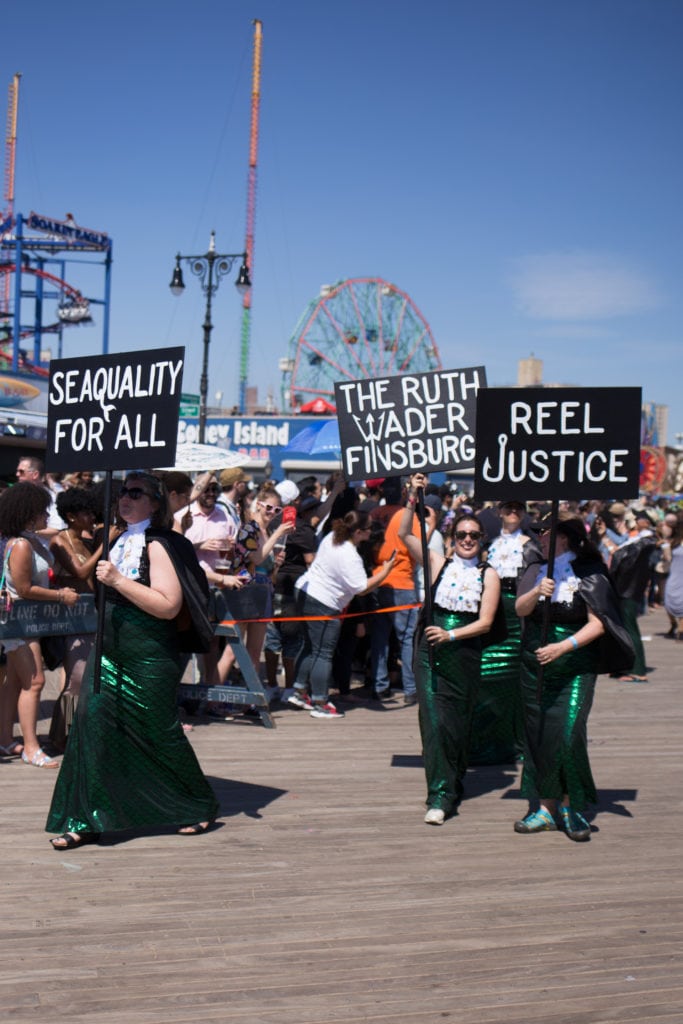
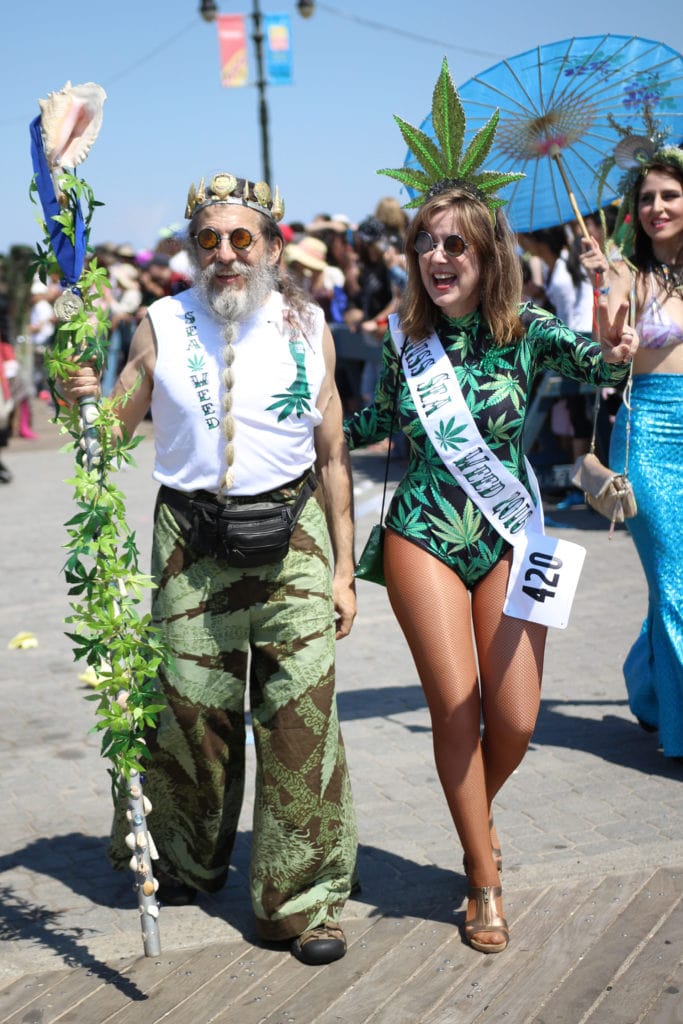
Julia Donahue-Wait lives in the Bronx and has marched in the parade twice. “At the time of my first parade I was just starting to get involved in burlesque,” she says. “I have always enjoyed costume making and dress-up—I also have a background in labor activism and an interest in performance art as protest.”
In 2006, Donahue-Wait and her friends marched in the parade as Maids in Mourning. “Several of my friends and I were working for the hotel workers’ union and there was constant discussion about real estate development and livability for working families in New York City,” she says. “Thor Equities, a big developer, was in the process of taking over Coney Island, with talks of closing down some of the amusement park.” Donahue-Wait and her friends wore long black sequin sarong tails with black tops and carried a cardboard coffin and tombstone-shaped protest signs.
Every year several people use their costumes to highlight the growing problem of ocean pollution, and in 2011, Donahue-Wait’s group donned green sequin tails and netting dotted with trash. The resulting “MerMutants” were a nod to the environmental disaster superfund site—and gentrifying Brooklyn neighborhood—surrounding the Gowanus Canal.
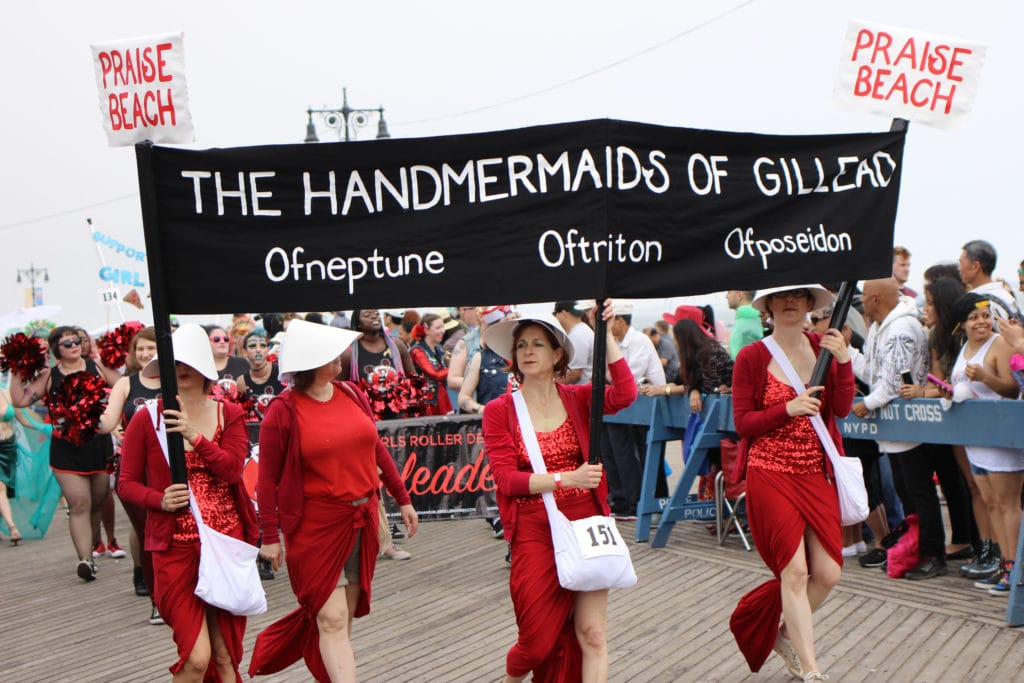
In 2017, the Handmermaids of Gillead (Ofneptune, Oftriton, and Ofposeidon) carried signs that said “Praise Beach” and “Under Neptune’s Eye,” a Mexican-themed merman advocated for “love beyond borders,” and two proponents of marijuana legalization, Mr. and Miss Sea Weed, managed to score the “420” bib.
The summer starts on Surf Avenue
The Mermaid Parade attracts hundreds of thousands of people to the southern tip of Brooklyn, but the route is large enough that spectators have plenty of space to spread out. If you want to see the motorized floats and antique cars you’ll need to stake out a spot on Surf Avenue, but those in search of more breathing room can watch marchers and push-pull floats from the boardwalk.
Clara Coquette is a New York City-based burlesque and drag performer. She has attended the parade—as both spectator and participant—seven times. “As soon as I saw the first parade, I fell in love,” she says. “A couple years later, I had friends that marched and it became much easier and more fun to march than sit somewhere and try to watch it.”
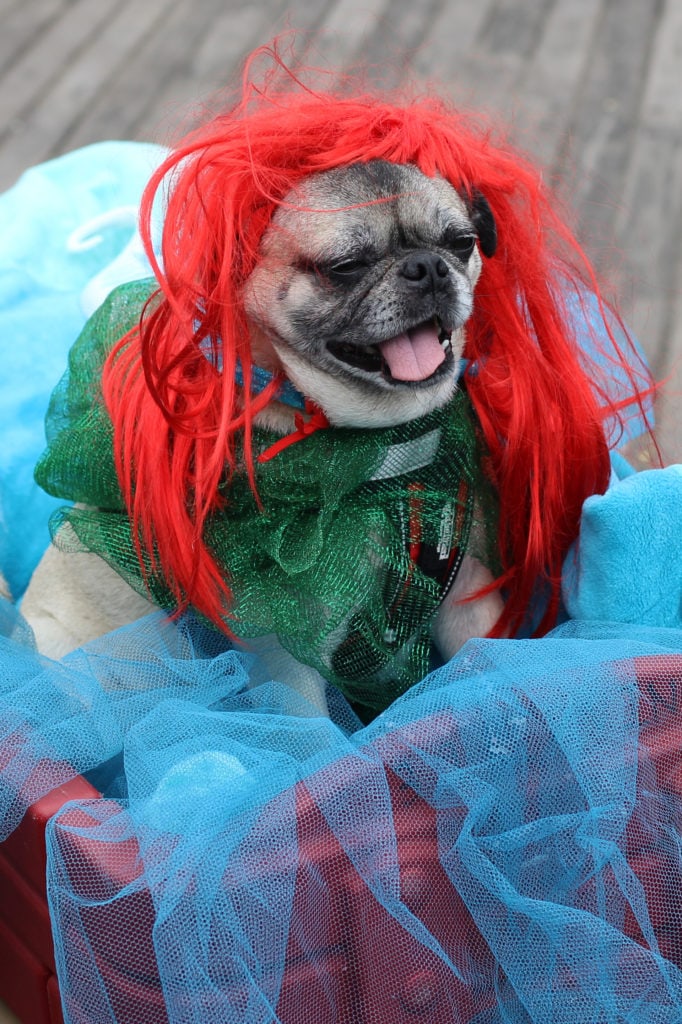
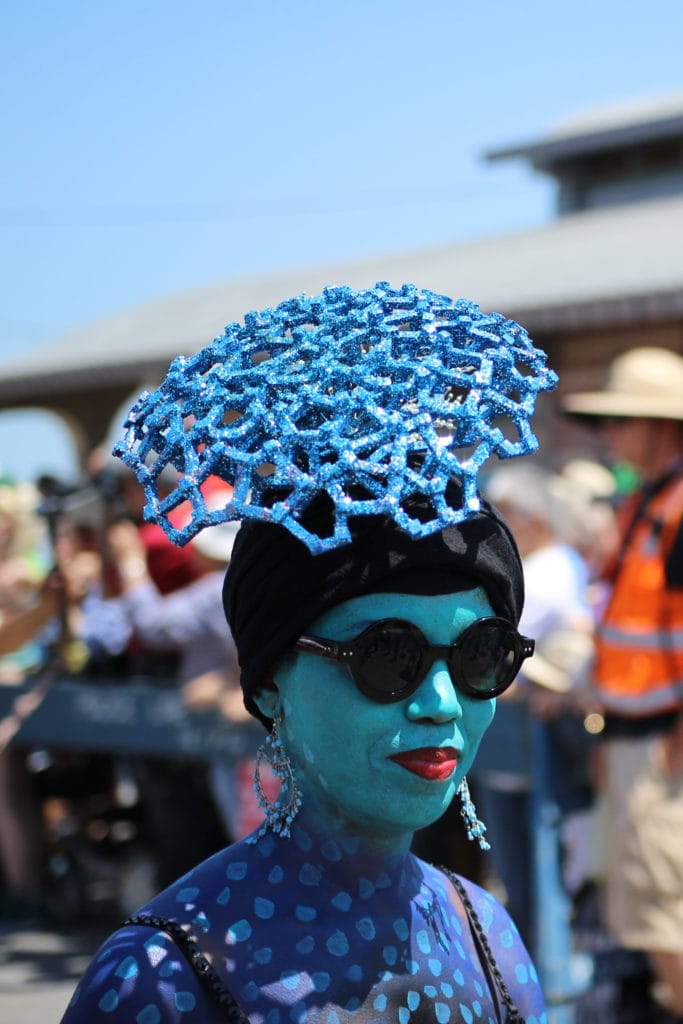
In past parades she has marched as a stingray, Miss Coney Island, a lobster-corn (part lobster, part unicorn), and a clownfish. This year she is dressing as a curious oyster from Disney’s Alice in Wonderland.
“The parade is one of my favorite, total New York experiences, and I encourage everyone to see or participate in it at least once in their lives,” Coquette says.
Judgeships include V.I.P. seating and a Mermaid Parade judge t-shirt. They also may or may not include bribes: According to Coney Island U.S.A., “Our judges are paradigms of fine jurisprudence, and as such actively discourage all bribes. Having said that, in year’s past there have been isolated incidences of bribery. And coincidentally it seems many of those proffering the best bribes seems to often go home with the top awards.”
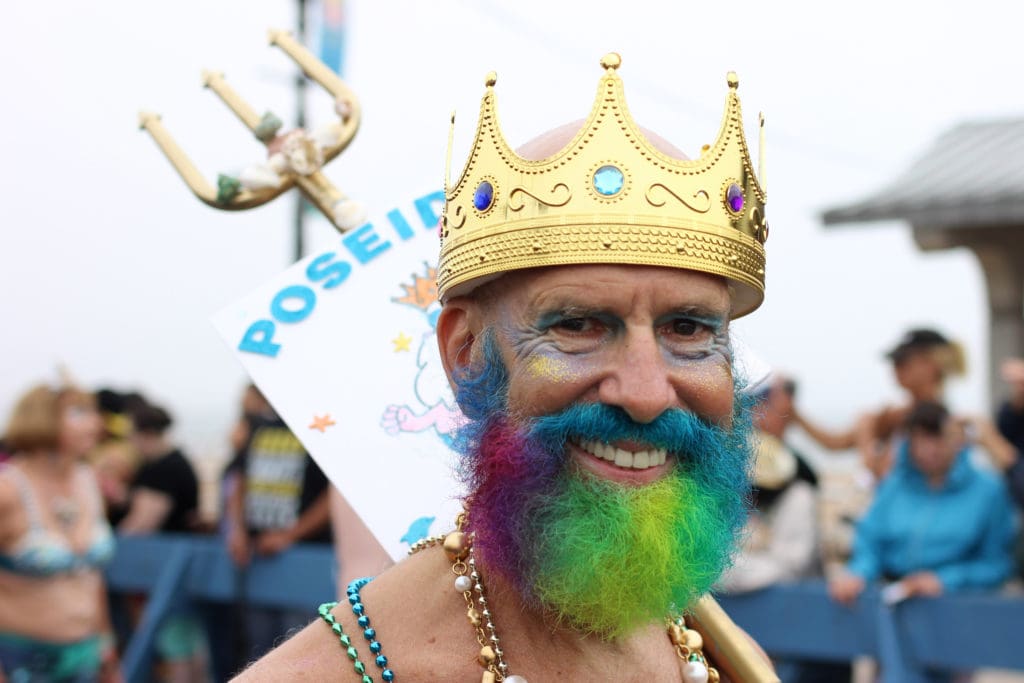
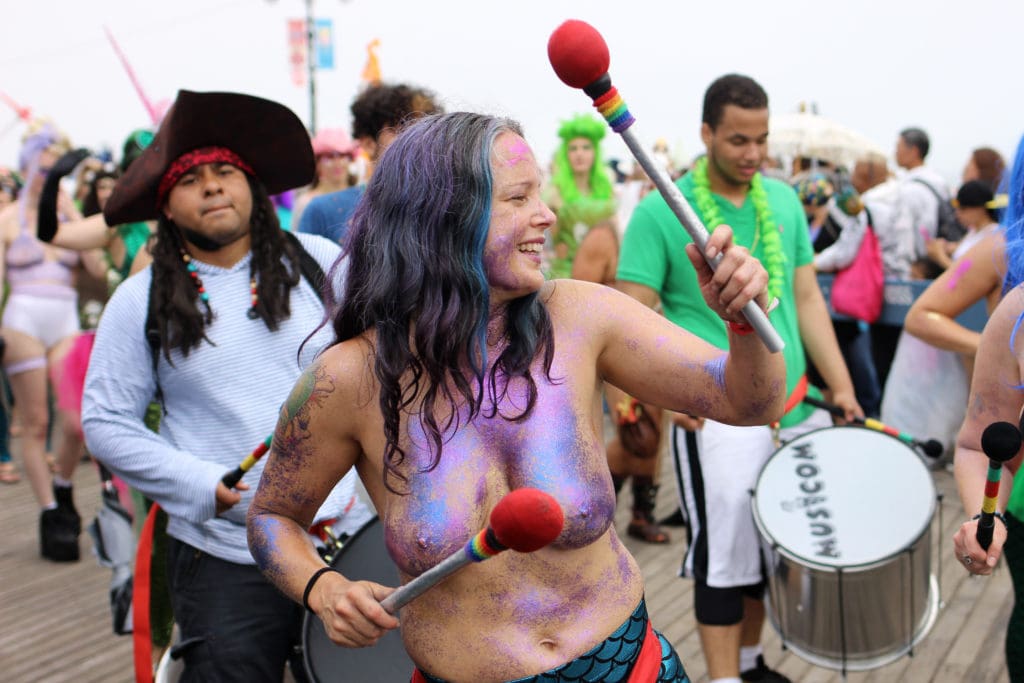
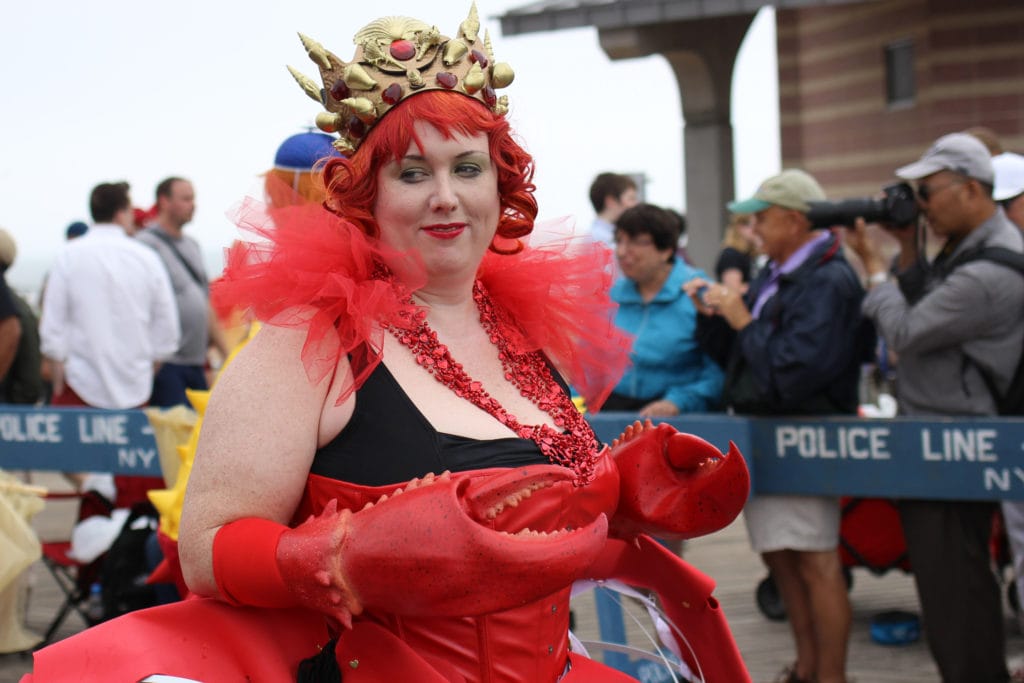
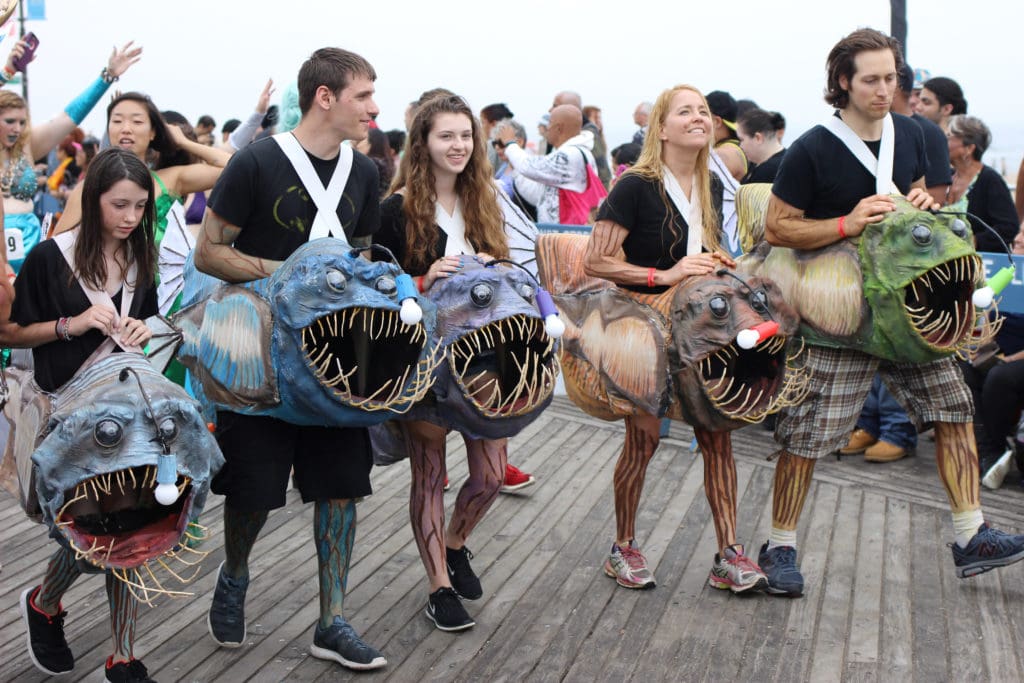
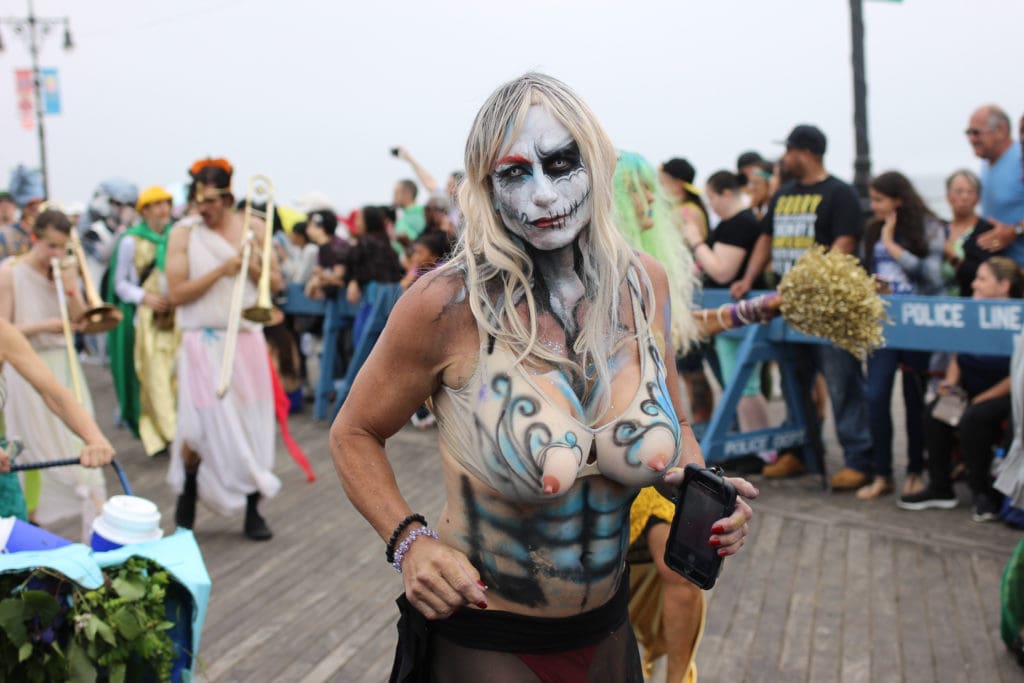
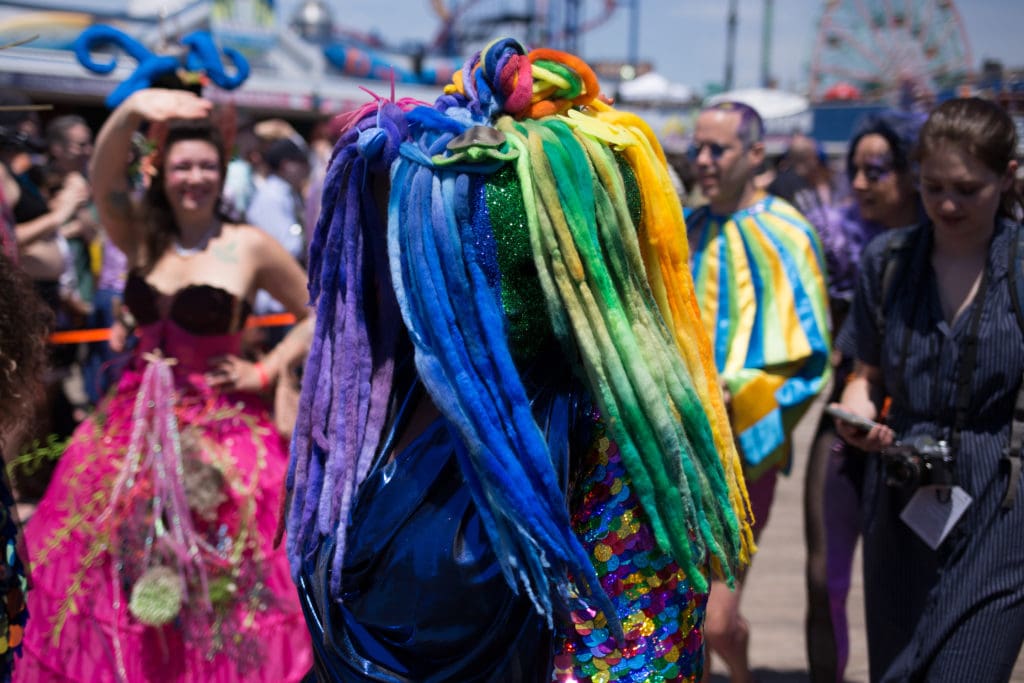
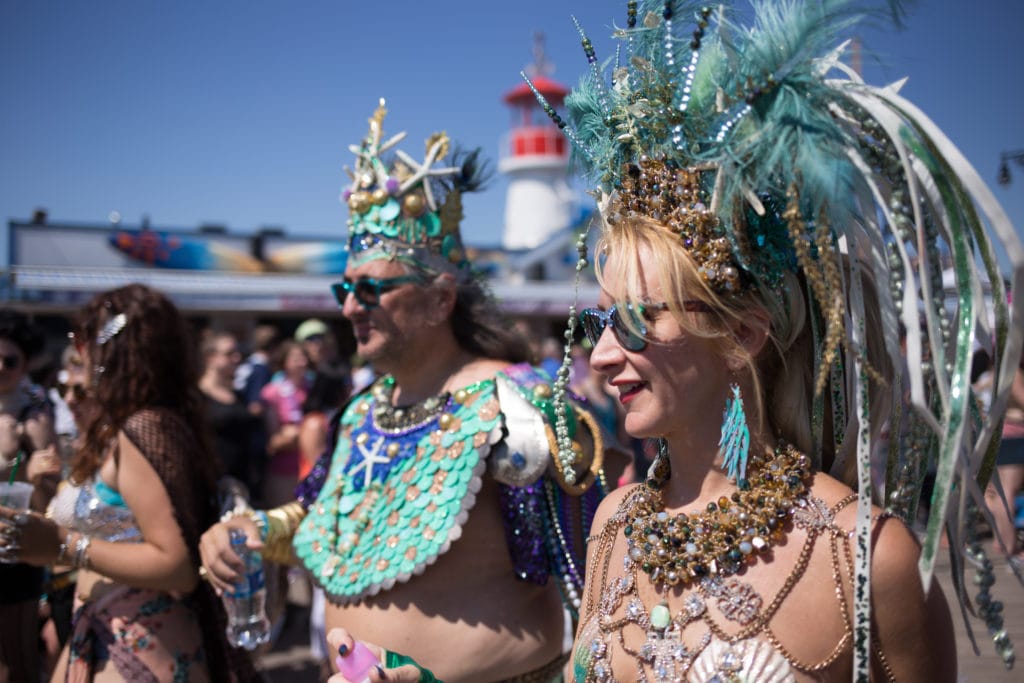
The parade ends after the last participant has passed the review stand at West 19th Street and Surf Avenue, at which point Zigun leads the procession down to the beach, signaling that the ocean is officially open for the summer swimming season.
Coney Island may not have pristine sand or luxury hotels, but for generations of New Yorkers it has been the epicenter of summer in the city. Surrounded by skyscrapers, concrete, and asphalt, it can be easy to forget that New York City is essentially a seaside village with miles of beaches along the coastline. The Mermaid Parade “really makes you marvel that in this great city you are just a train ride away from the ocean—and mermaids!” says Donahue-Wait.
If you go
The 40th Annual Mermaid Parade kicks off at 1 p.m. (rain or shine) on Saturday June 18, 2022 at West 21st and Surf Avenue and proceeds on Surf Avenue to West 10th, then heads south to the Boardwalk and then west back to its ending point at Steeplechase Plaza on the Boardwalk.


